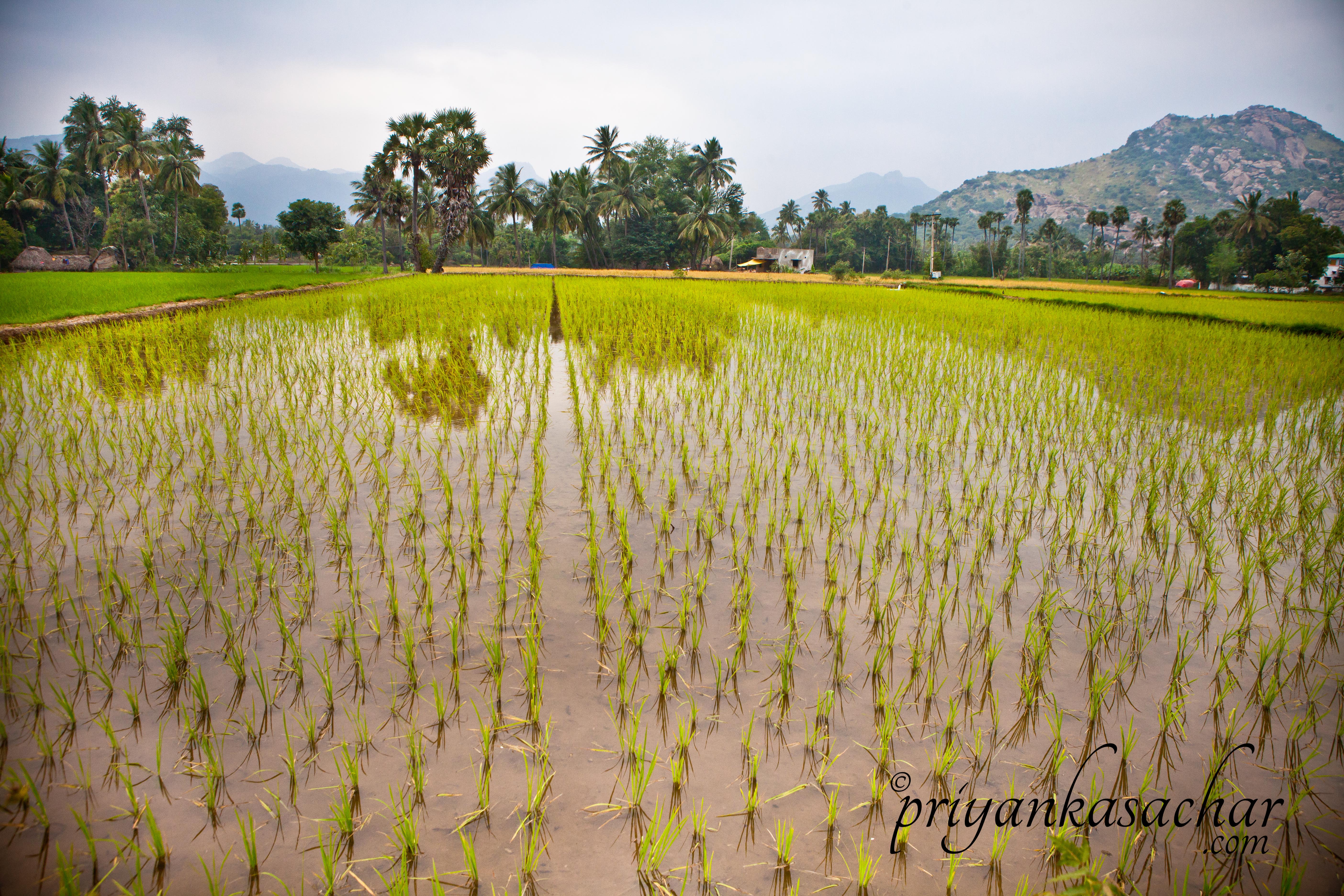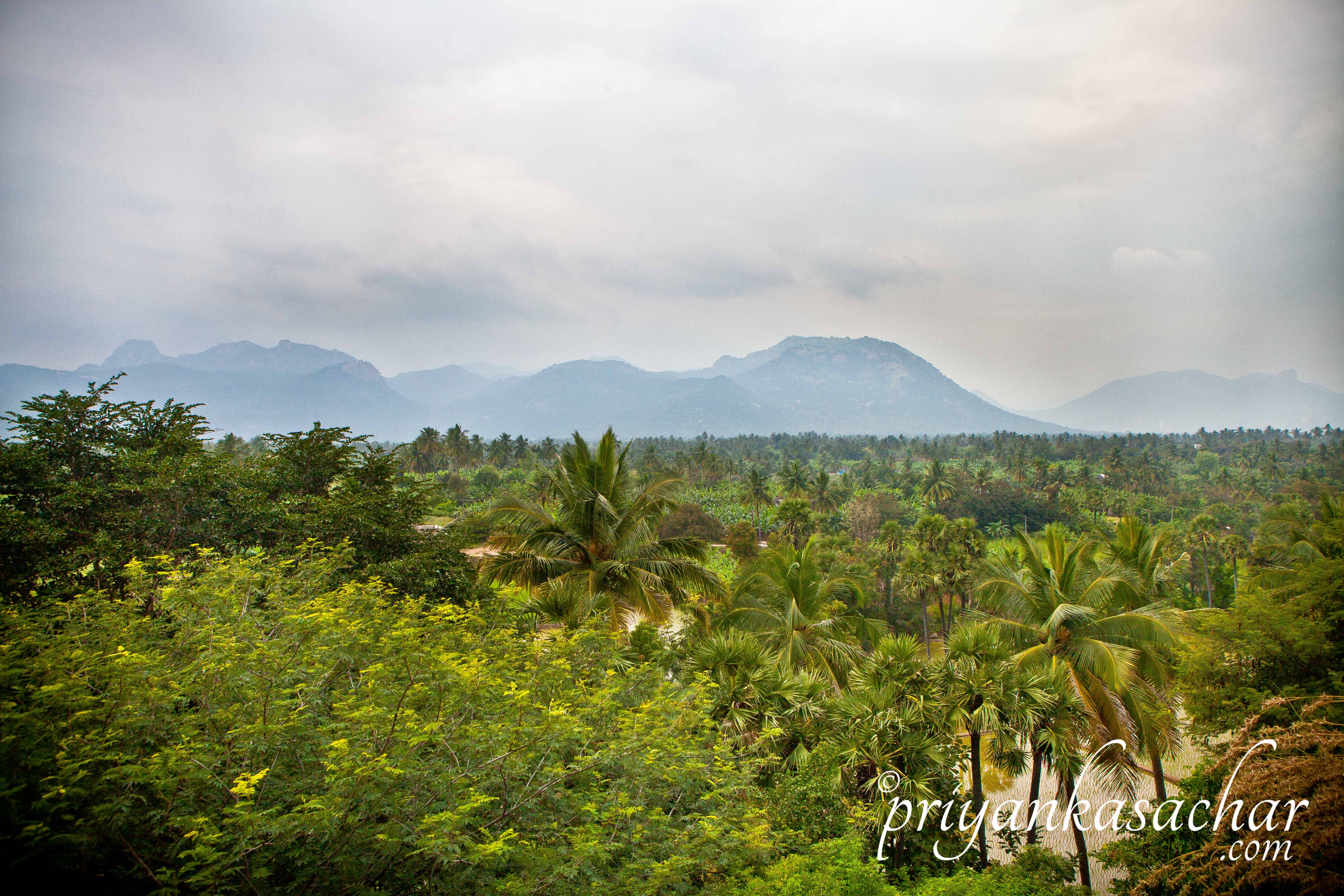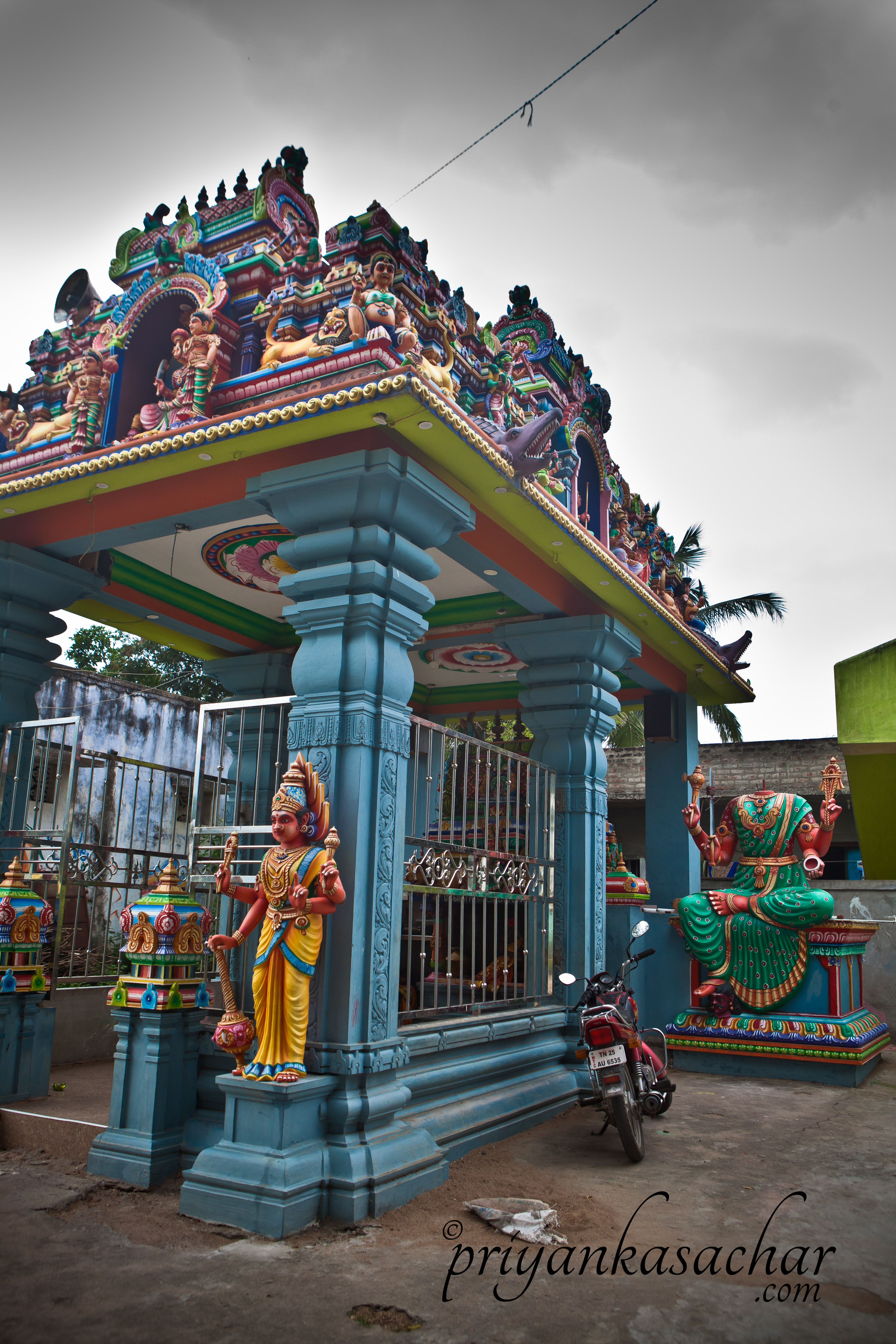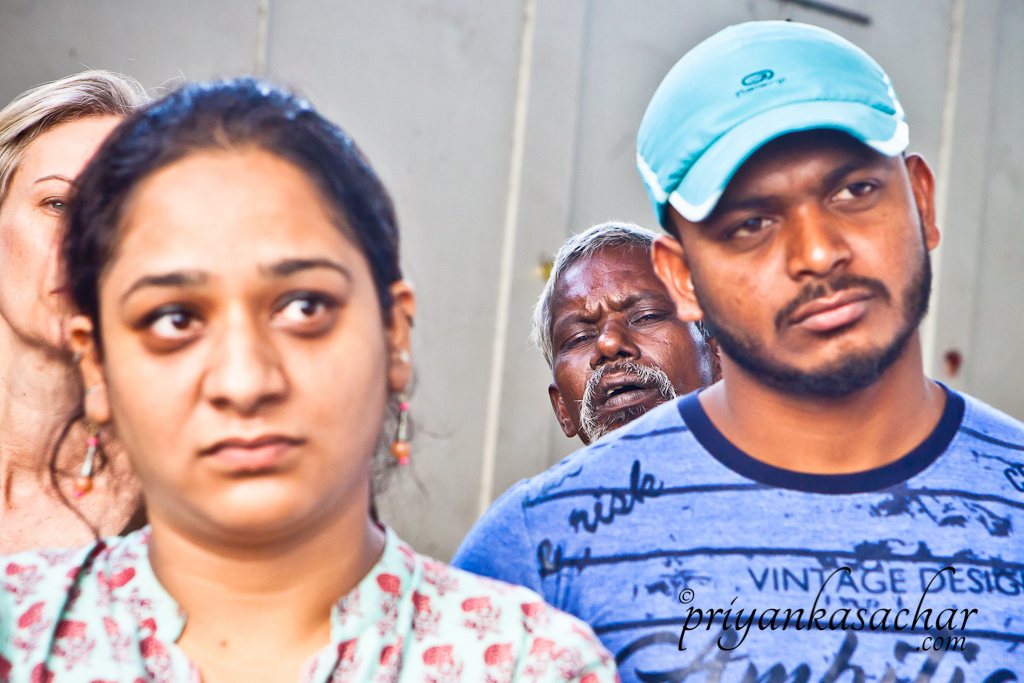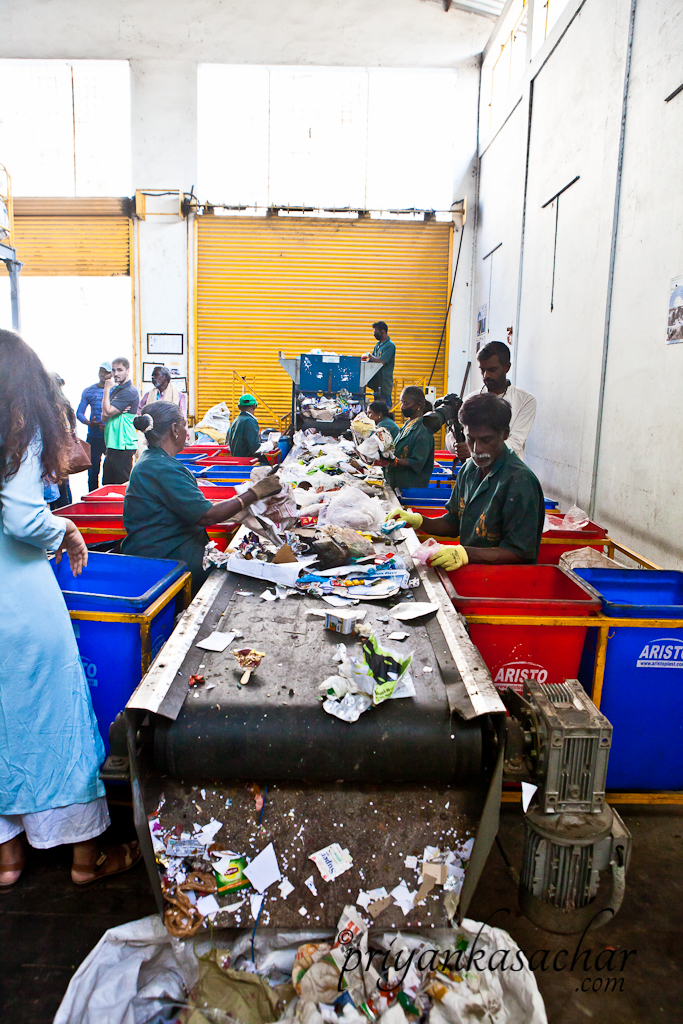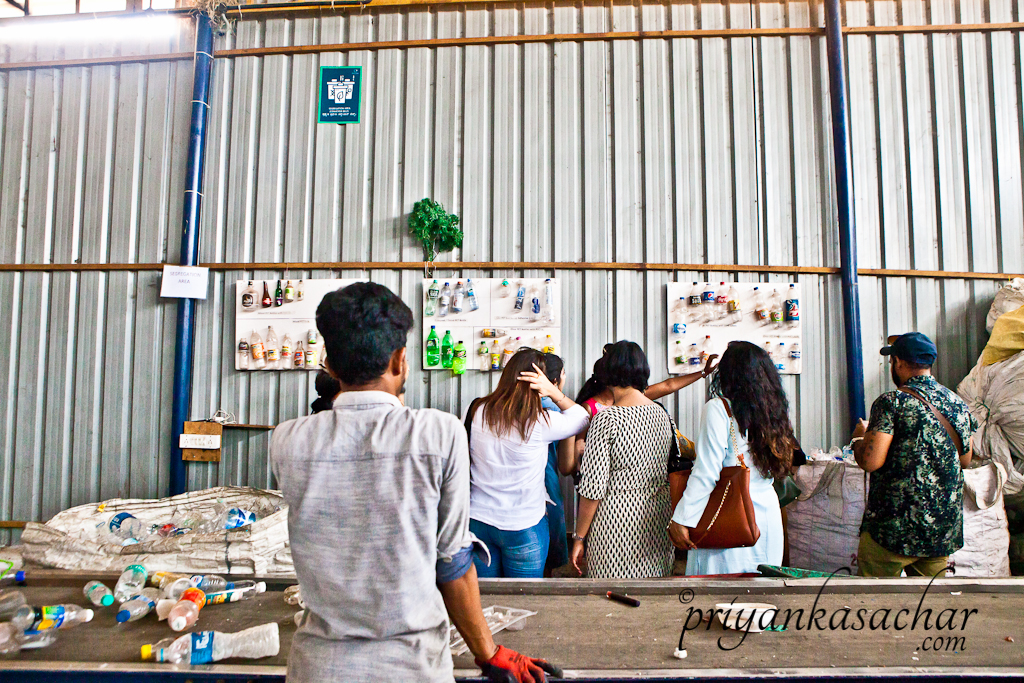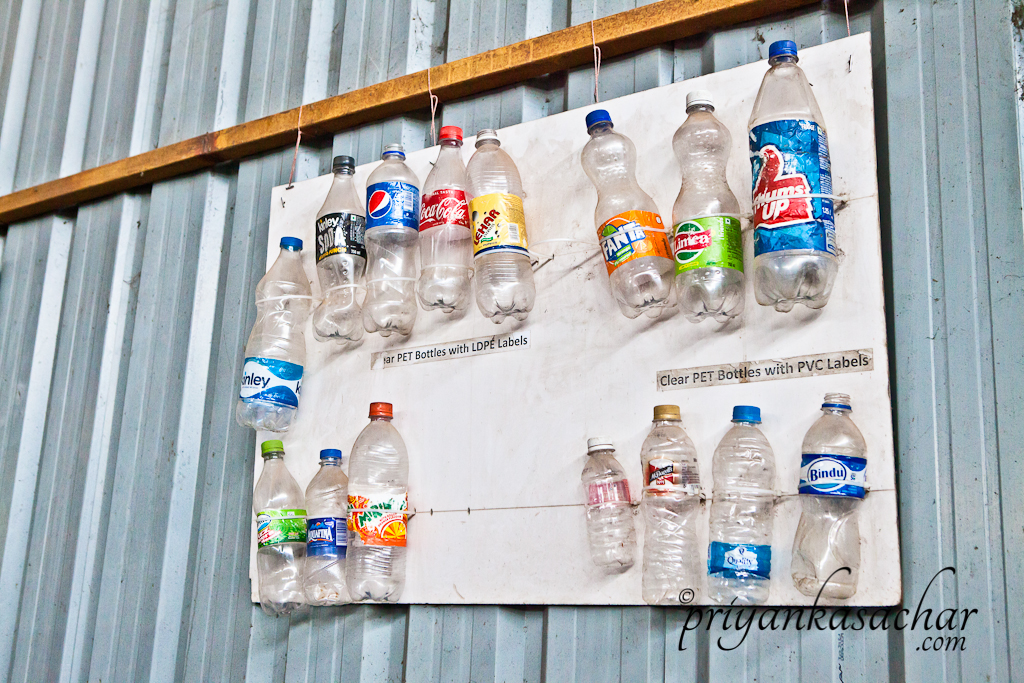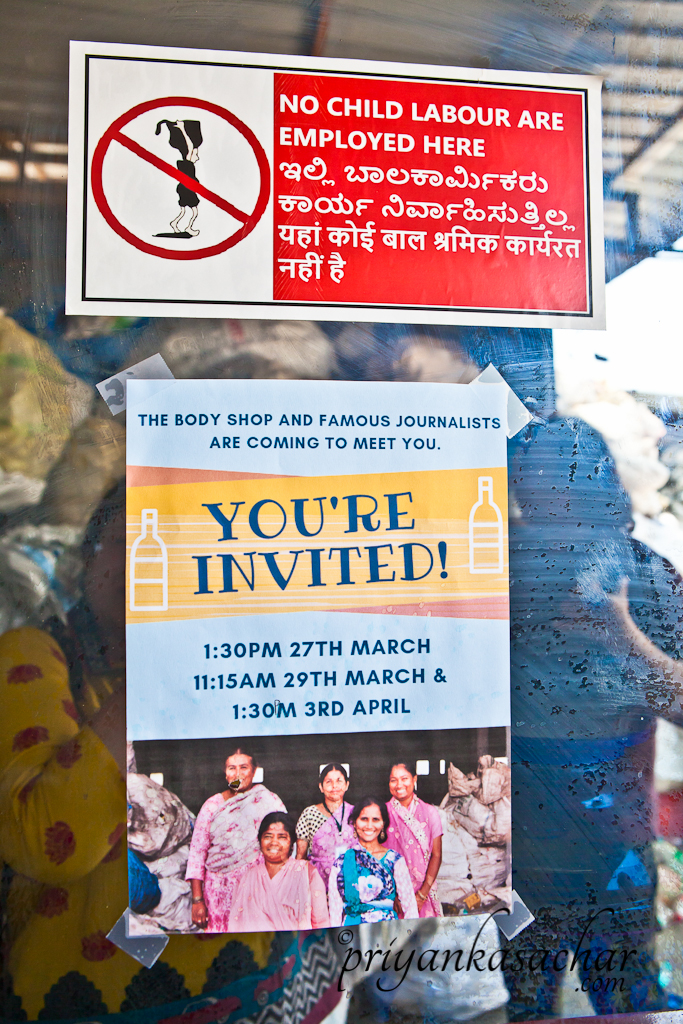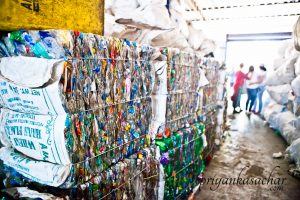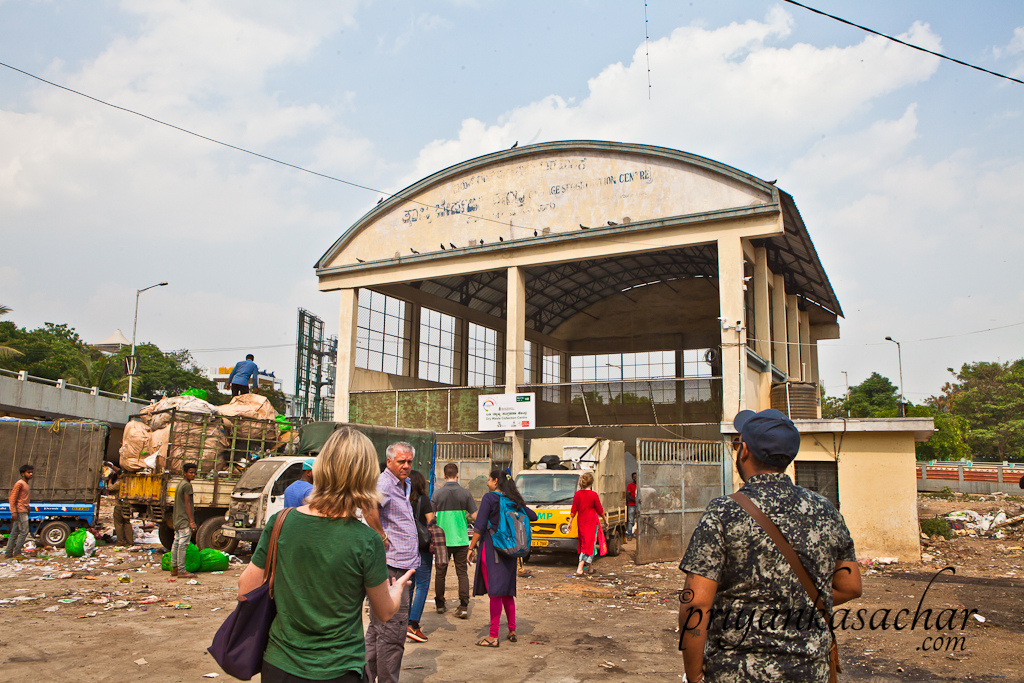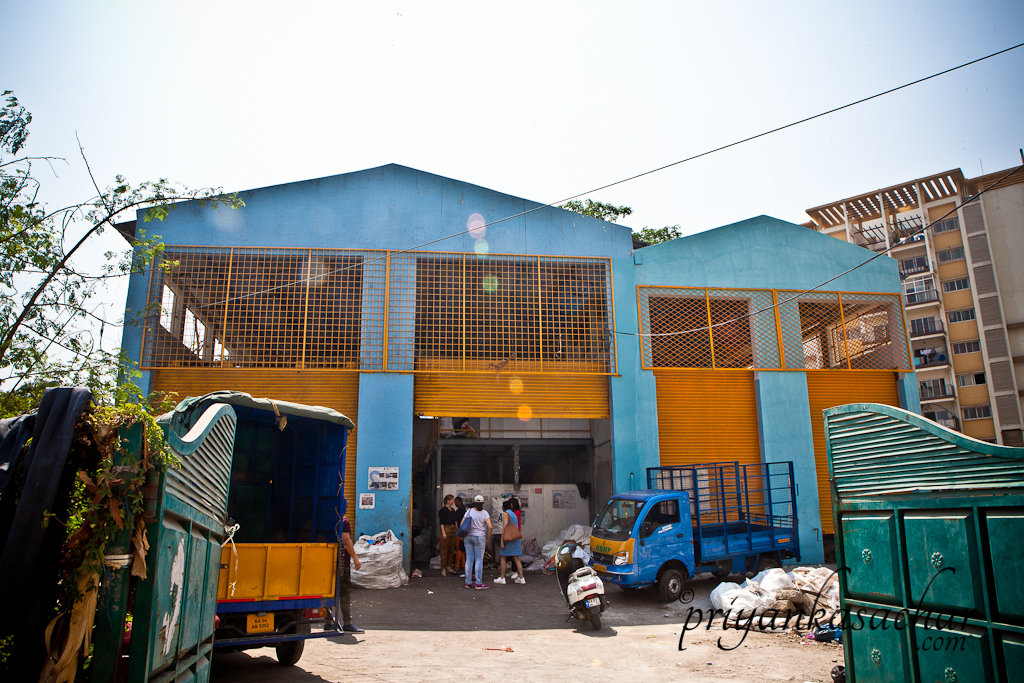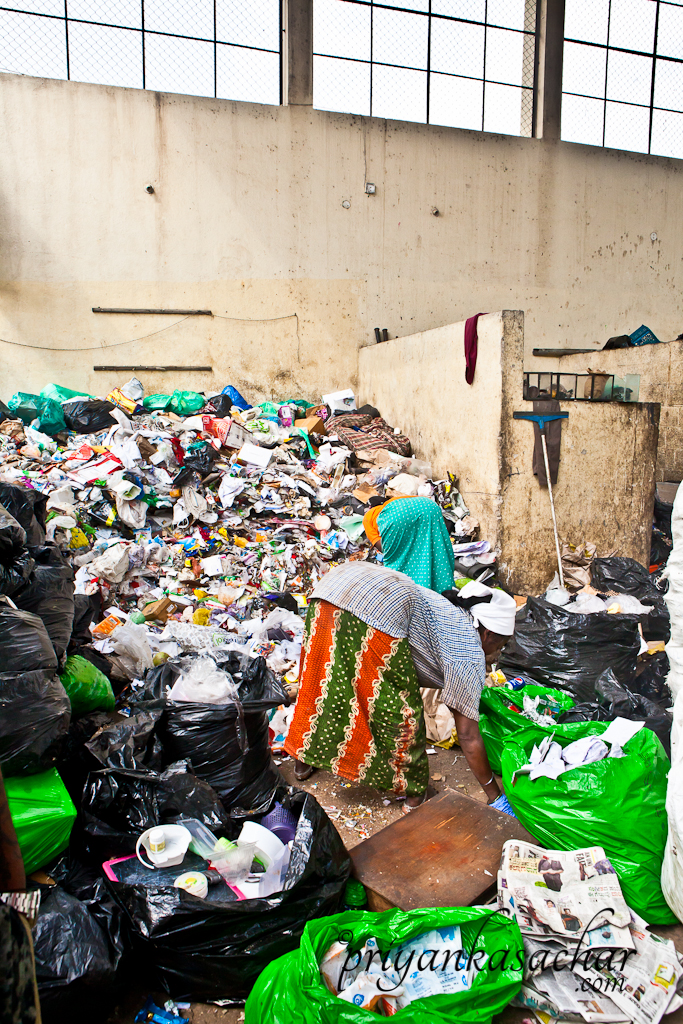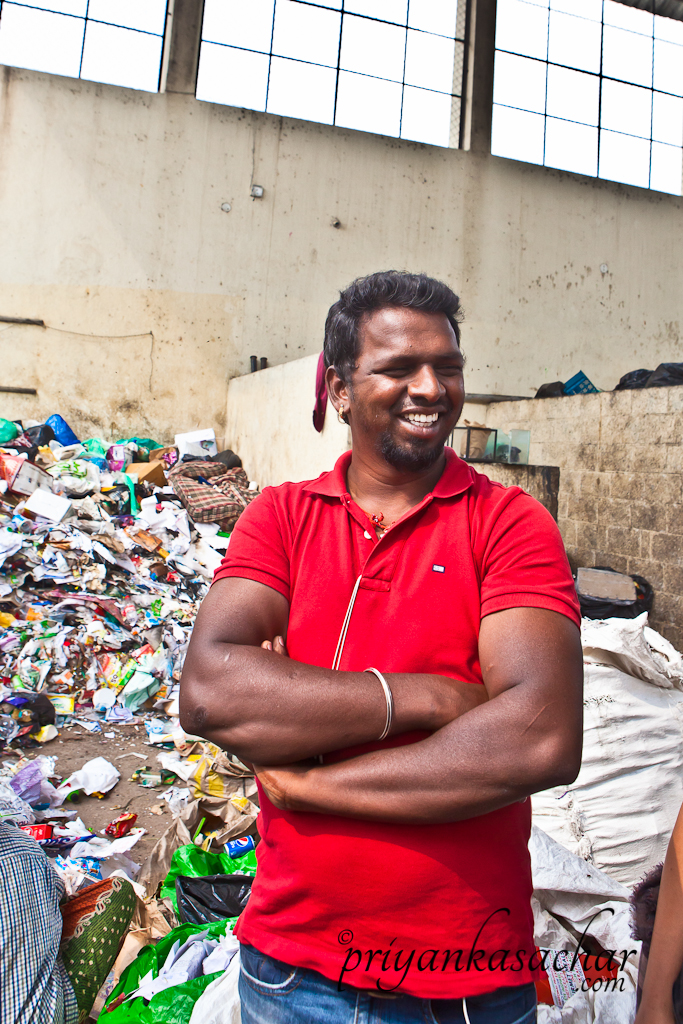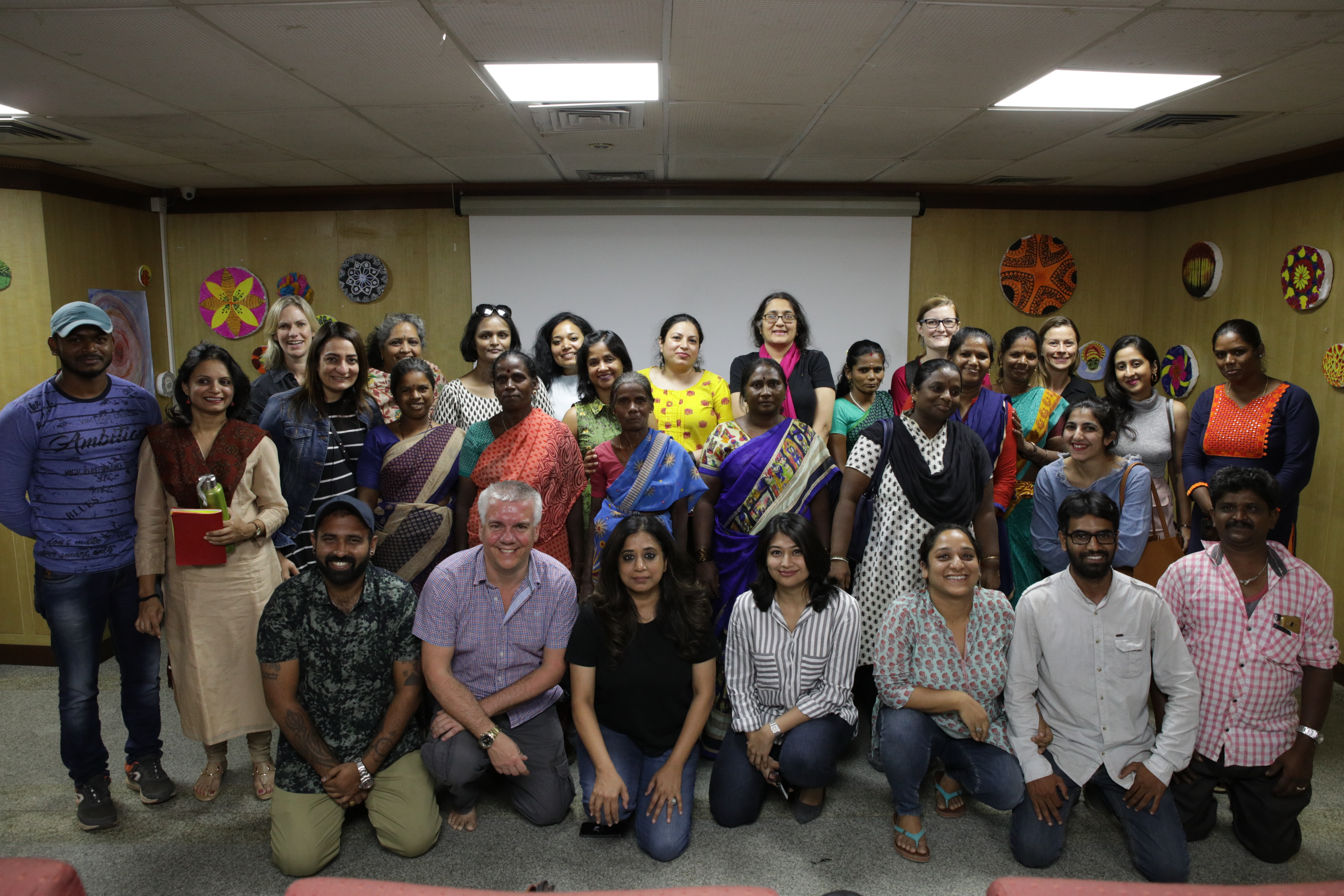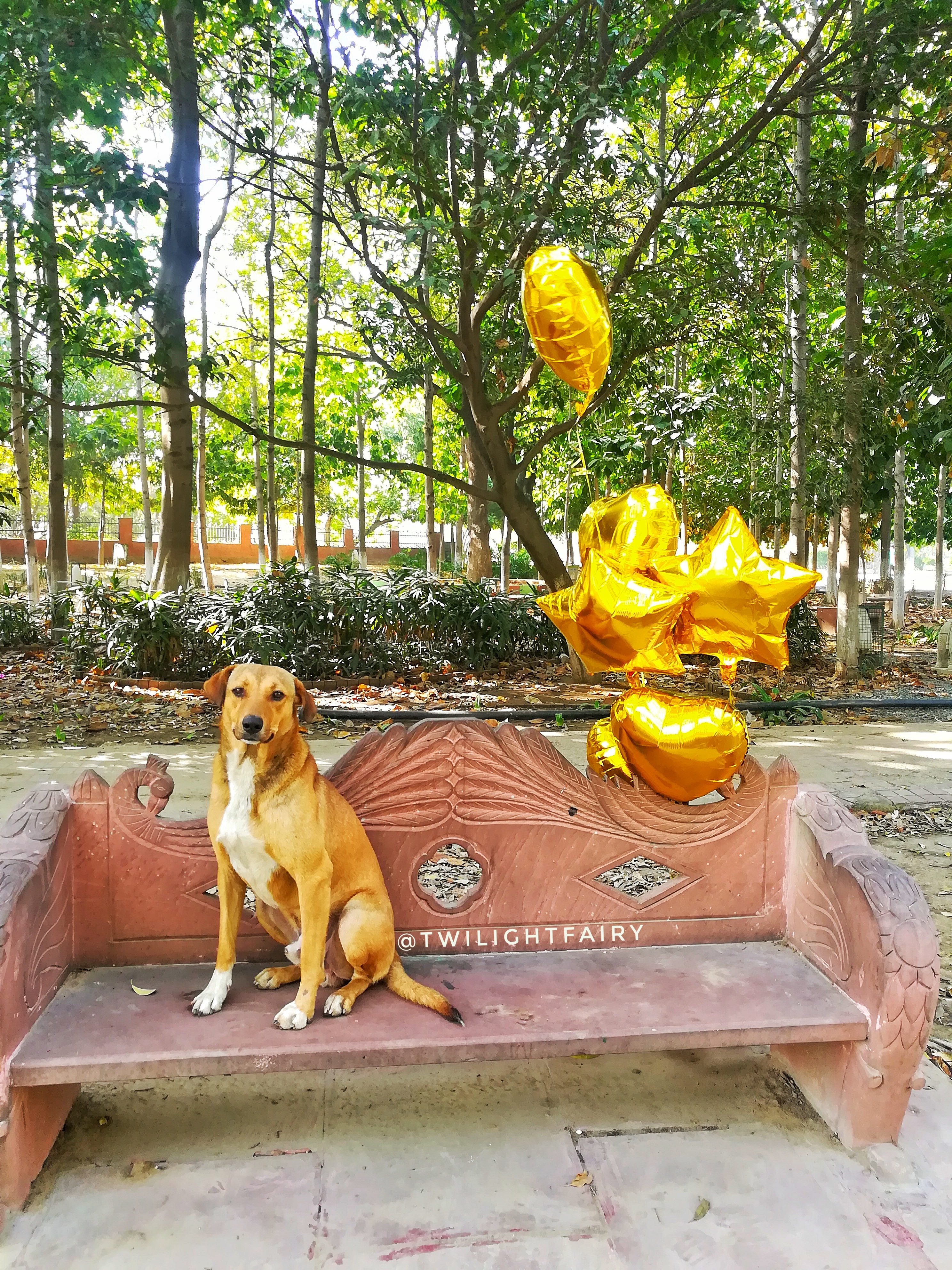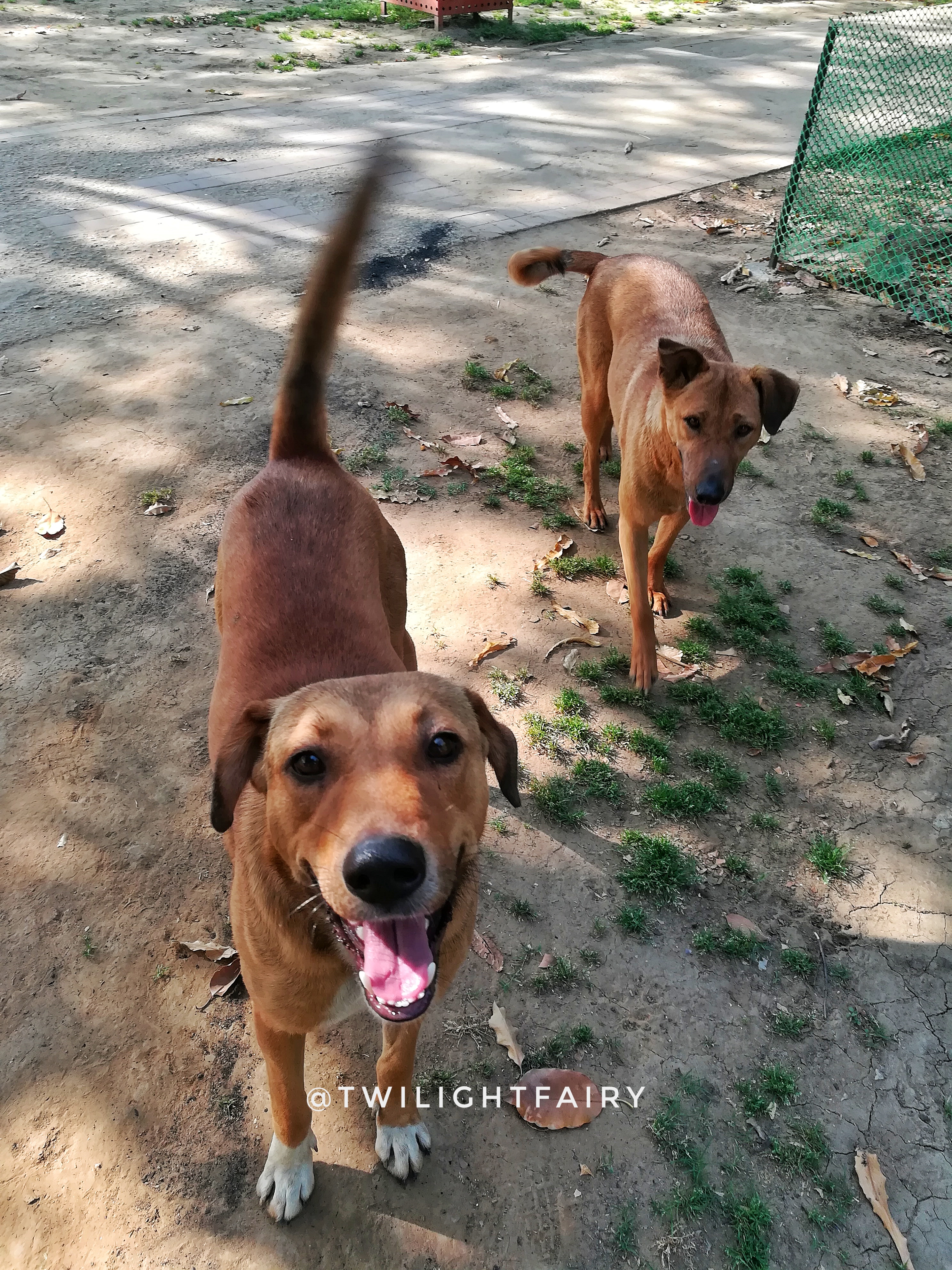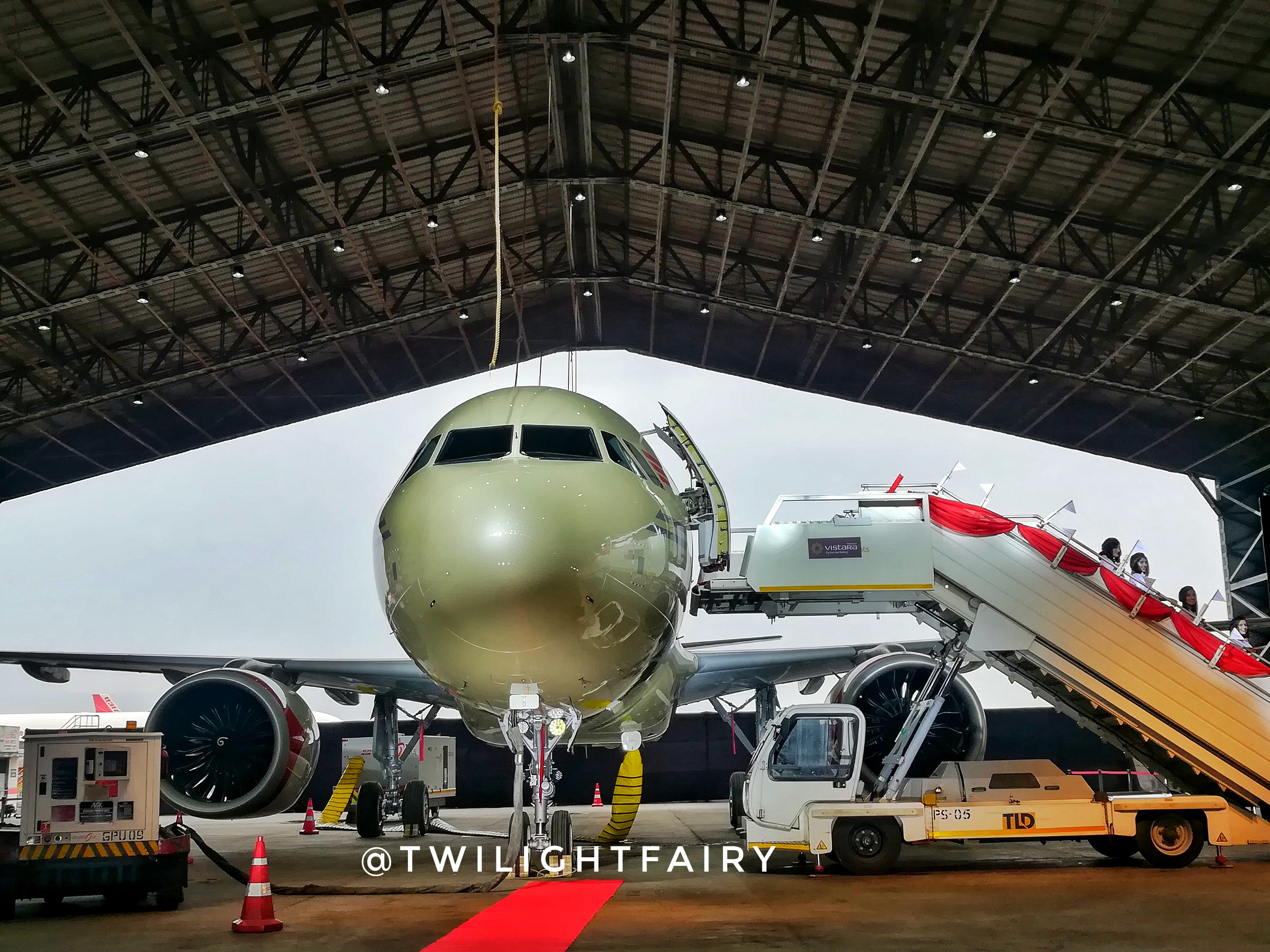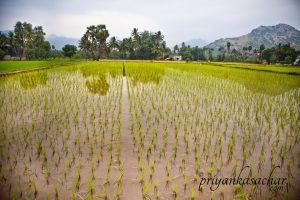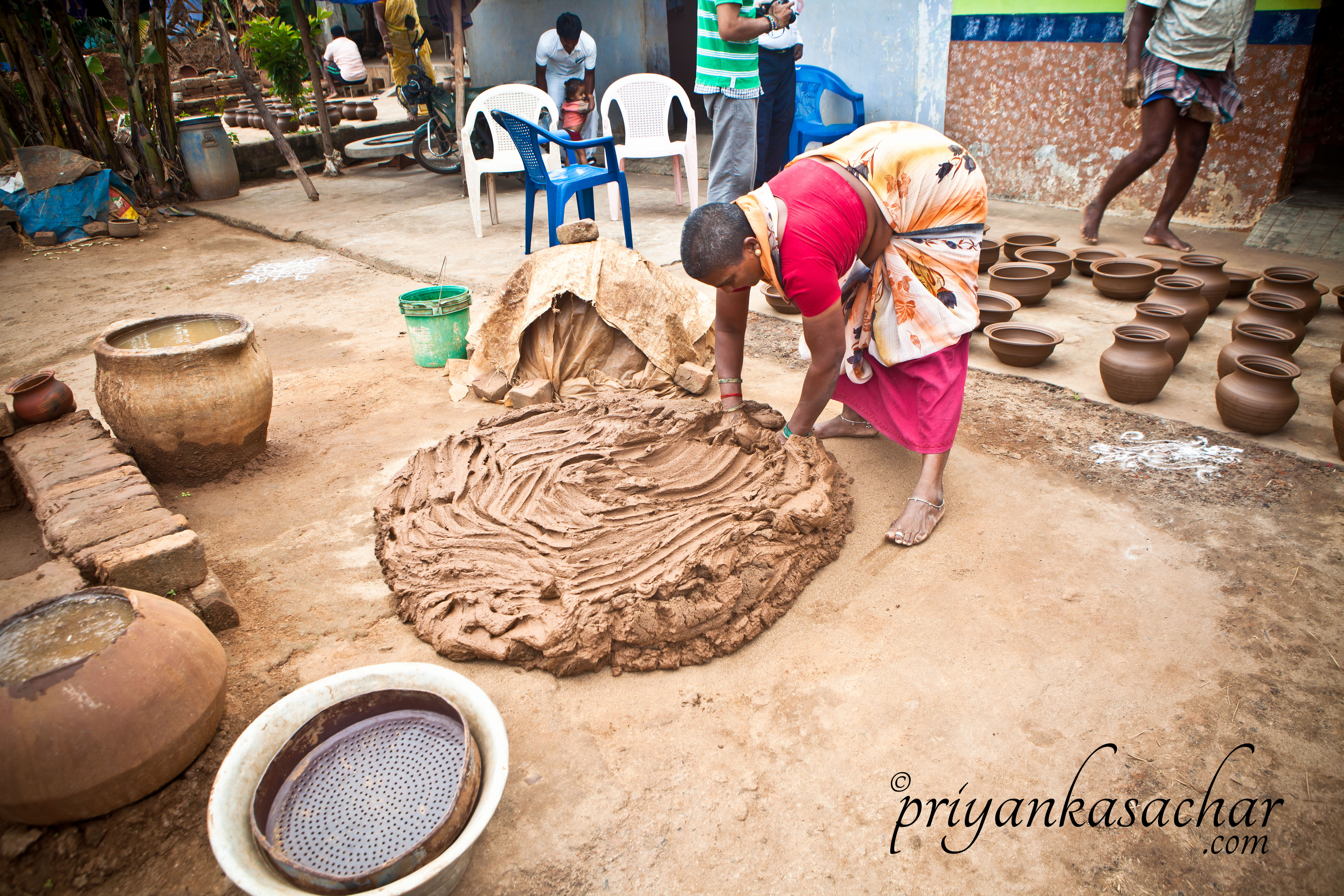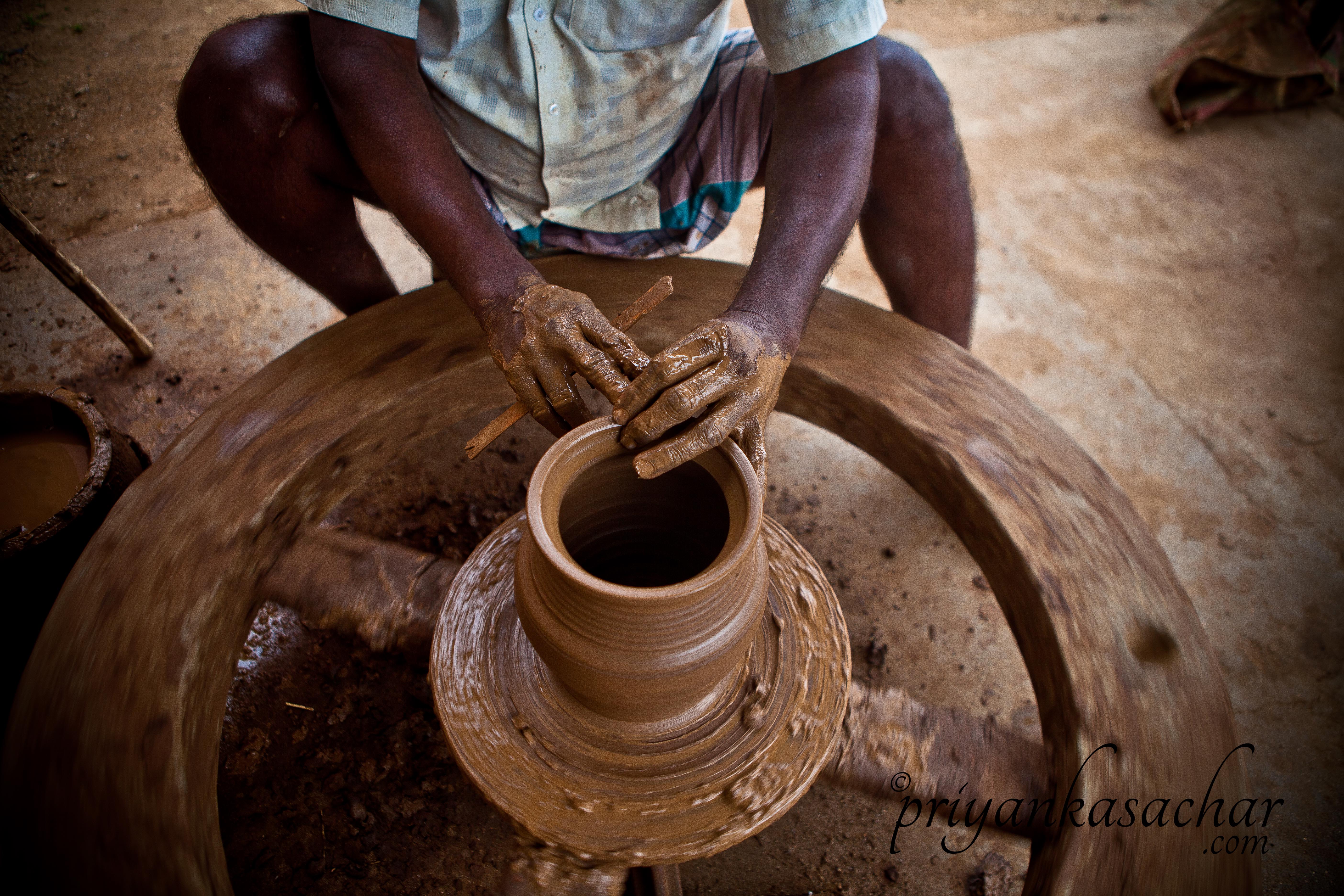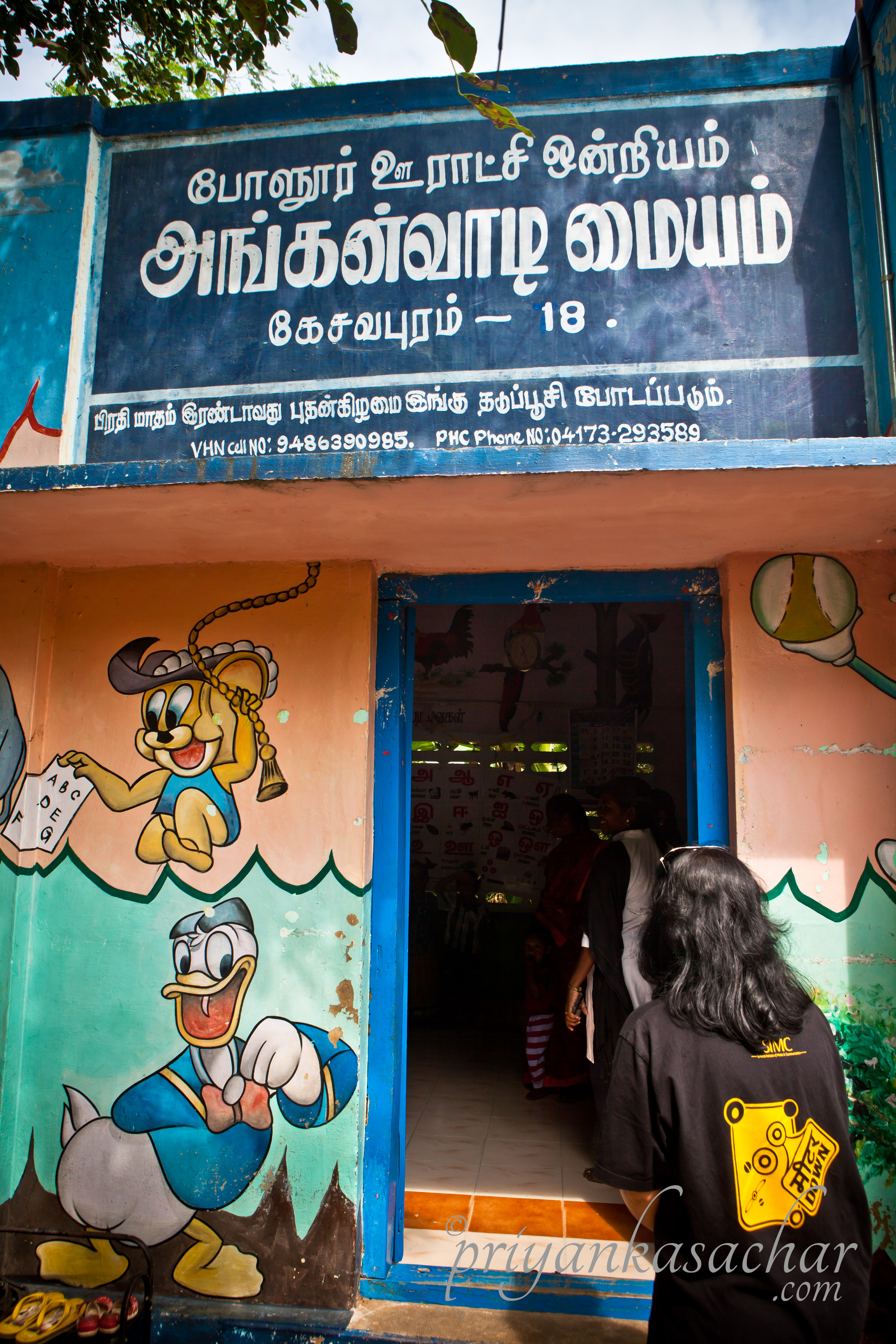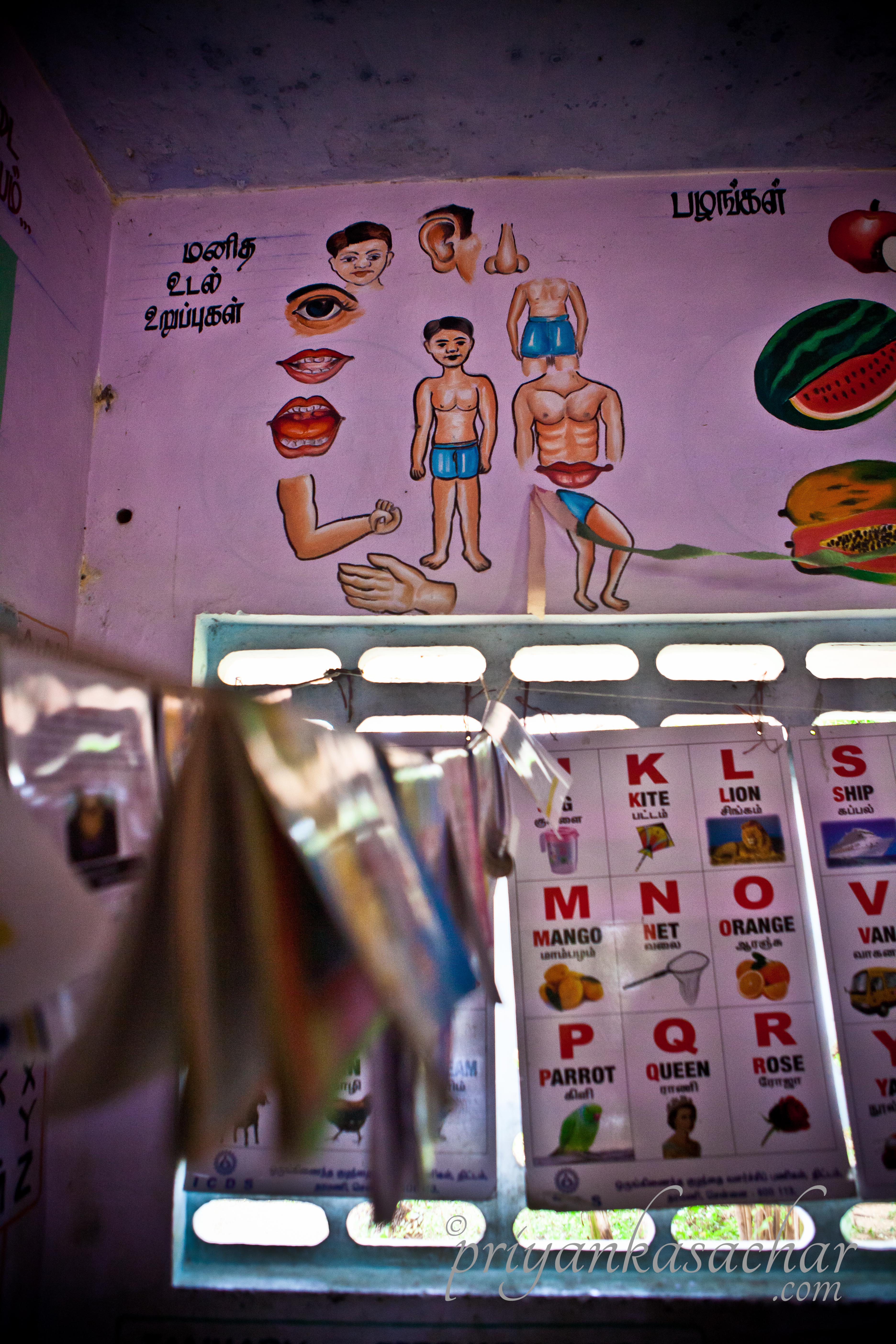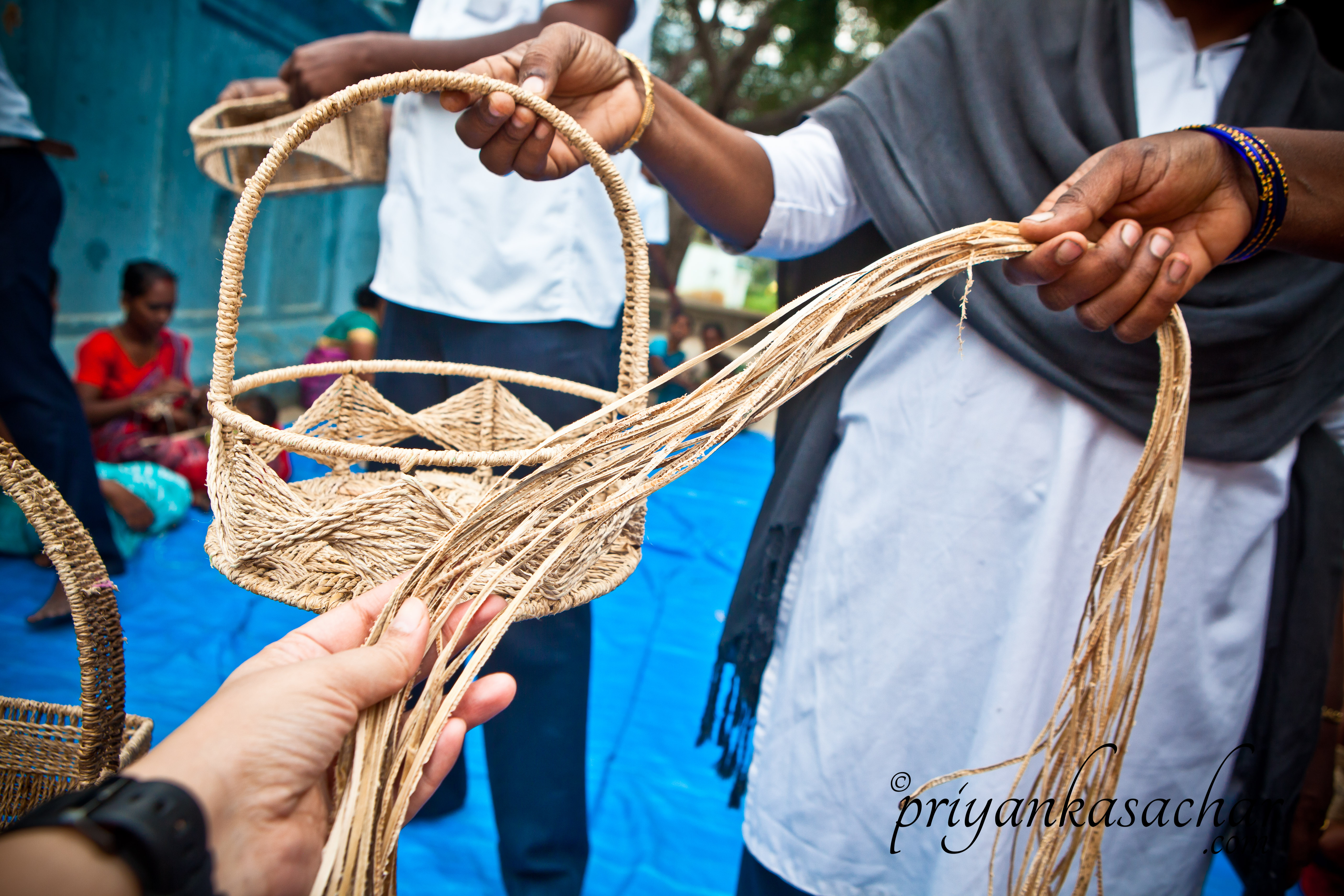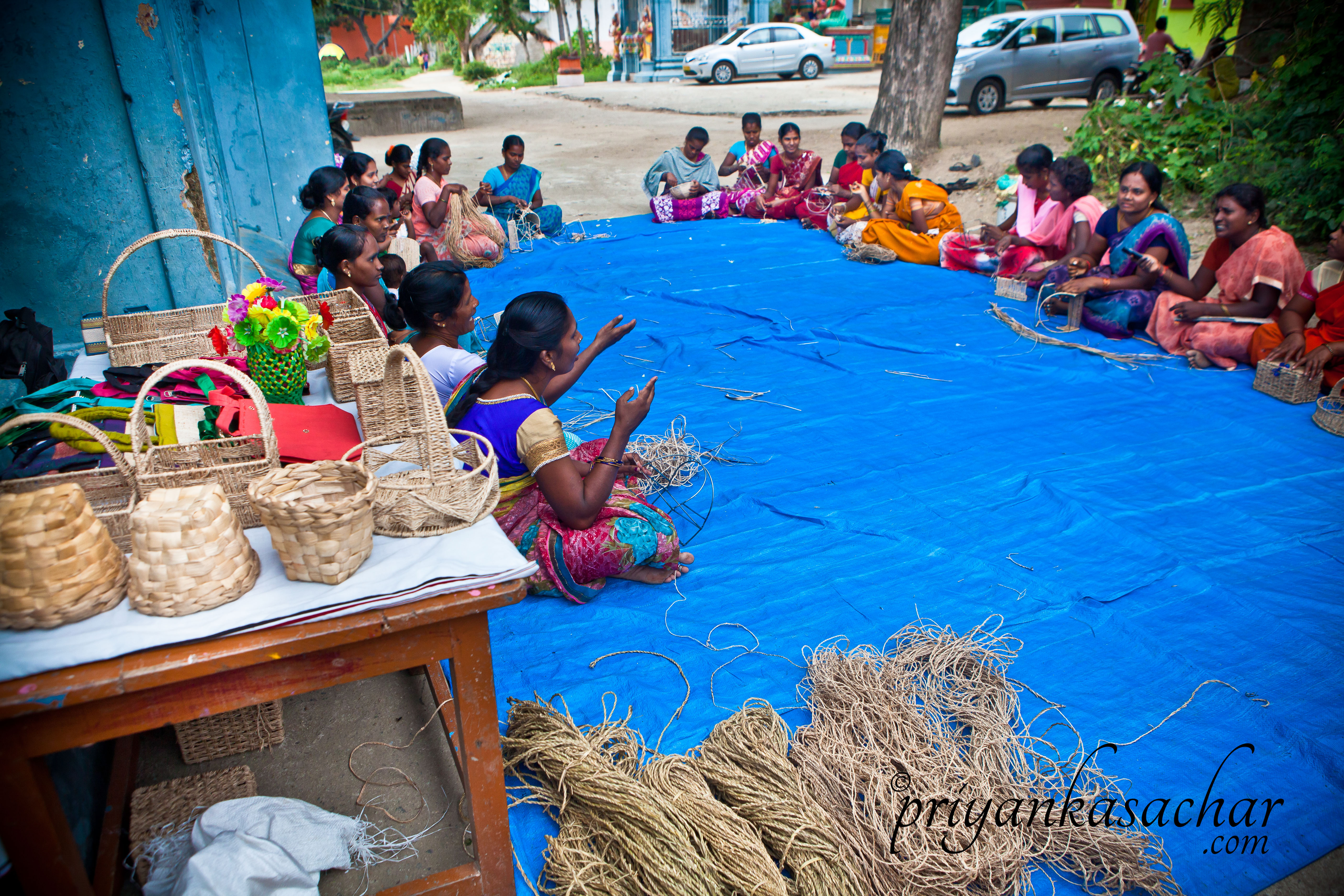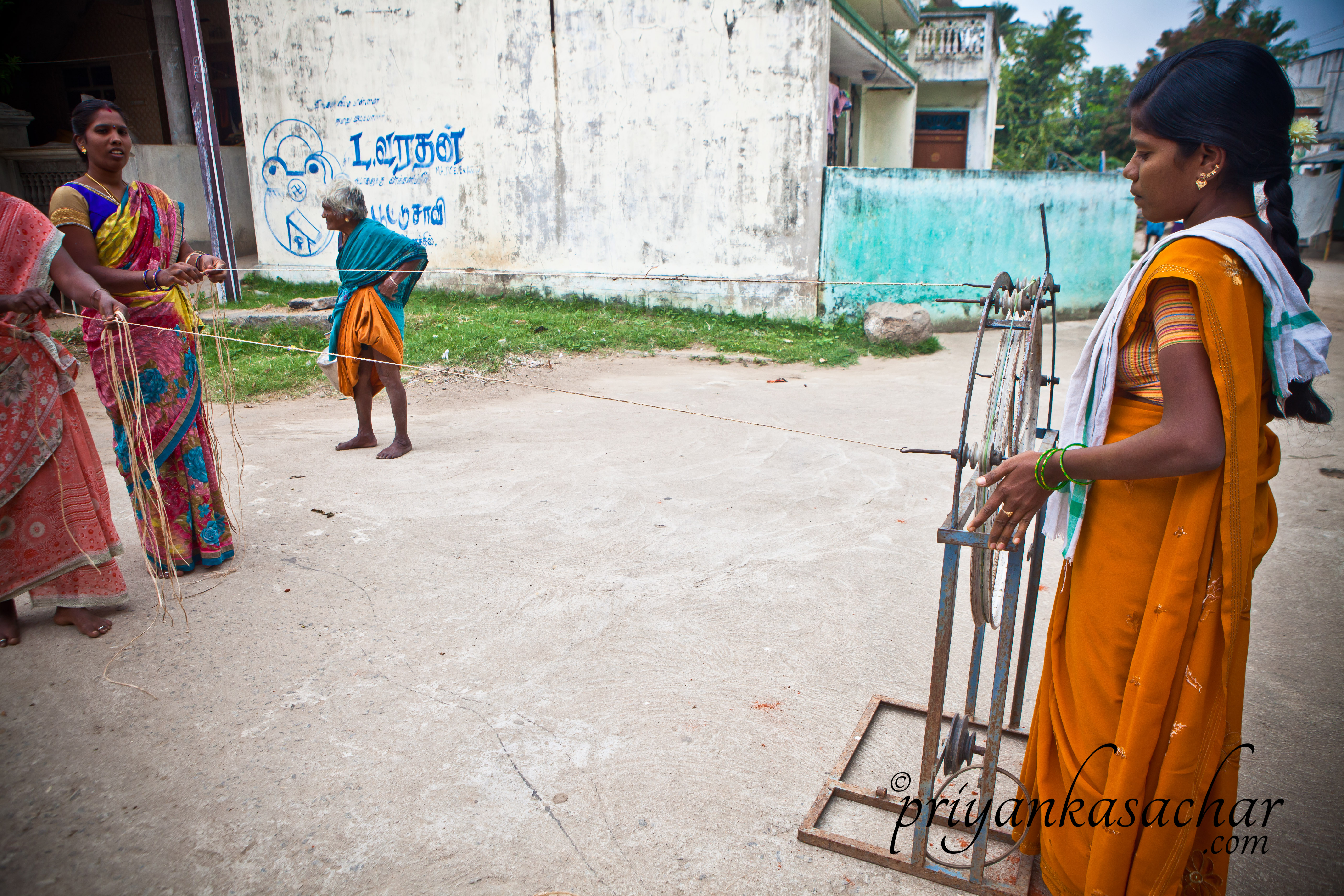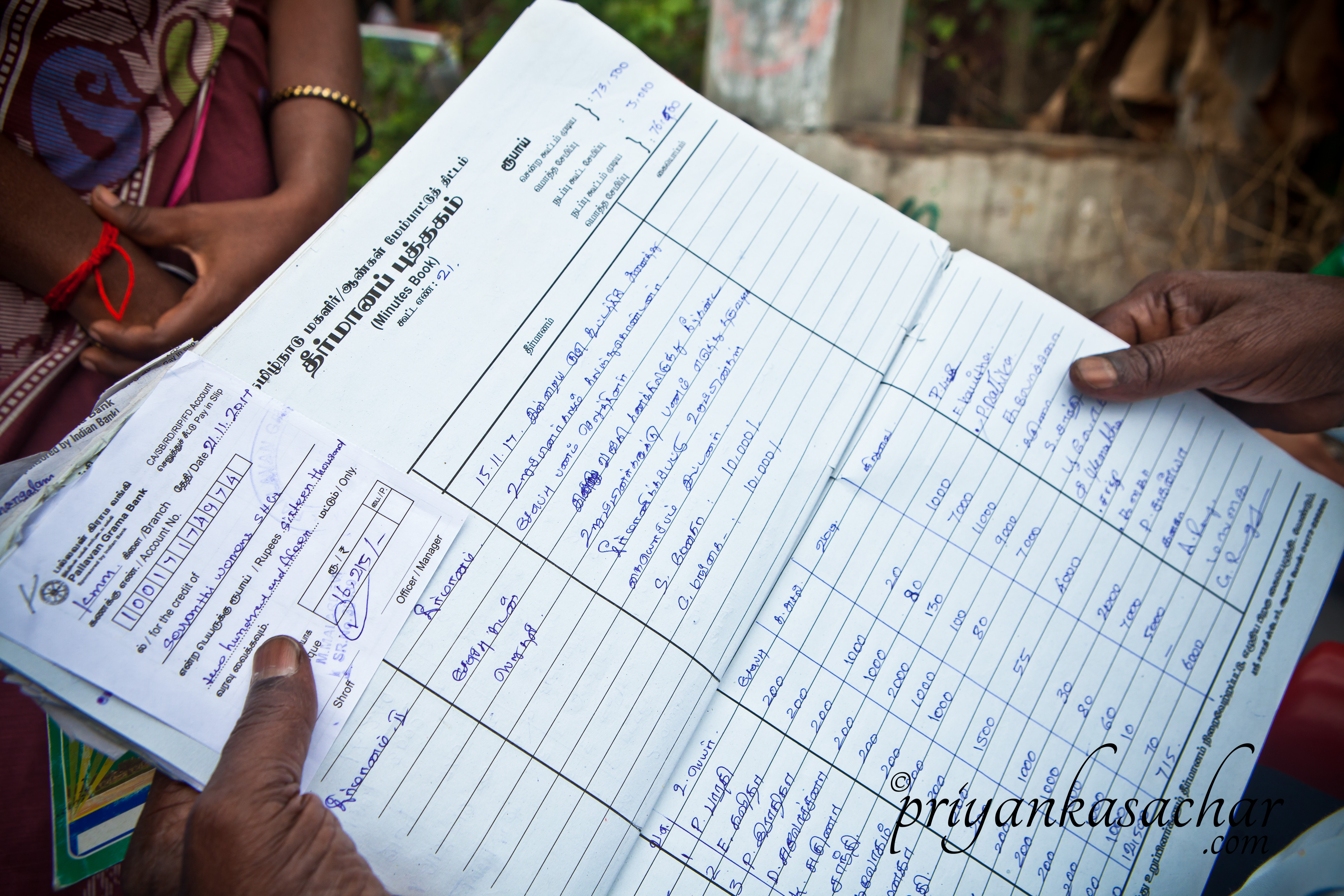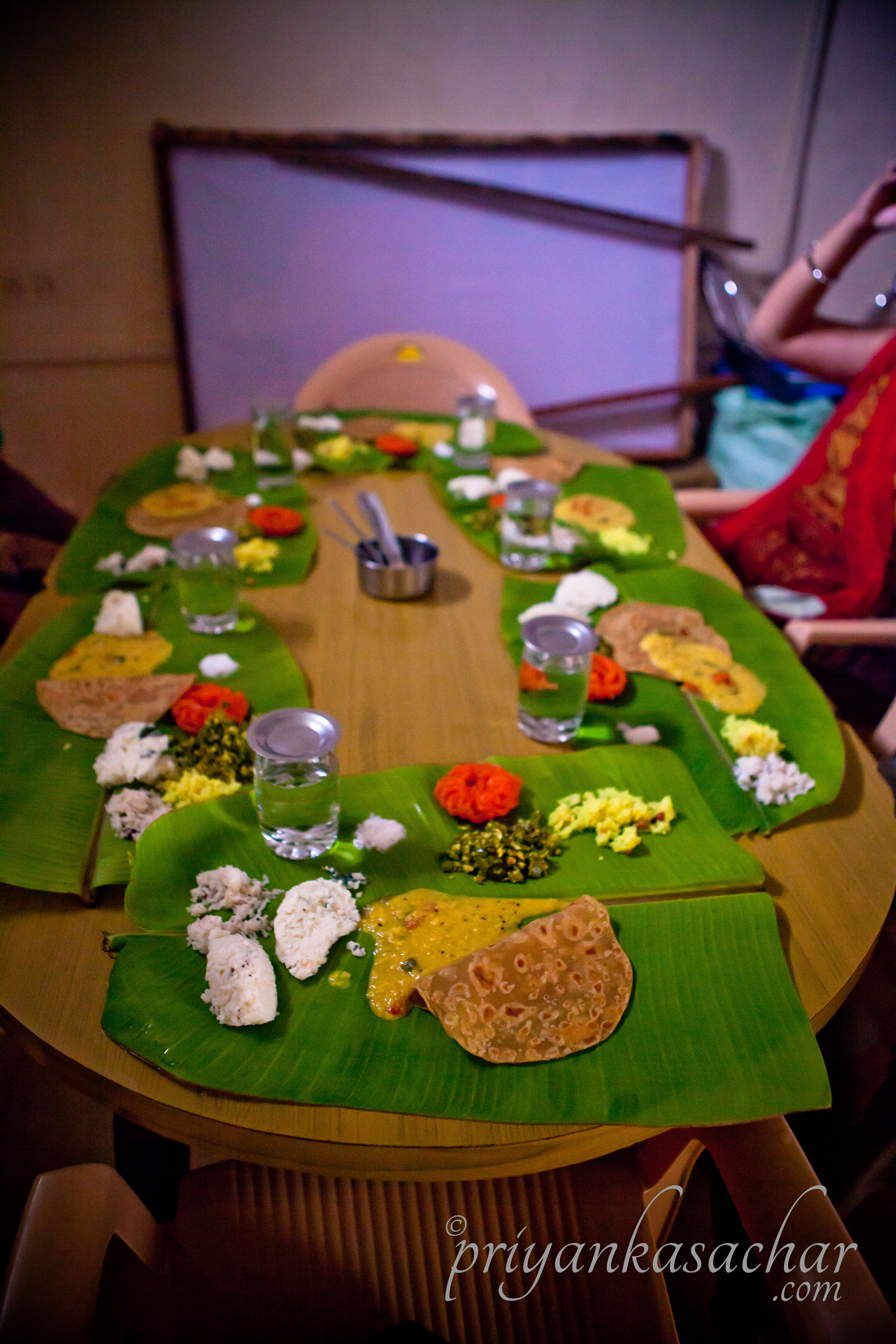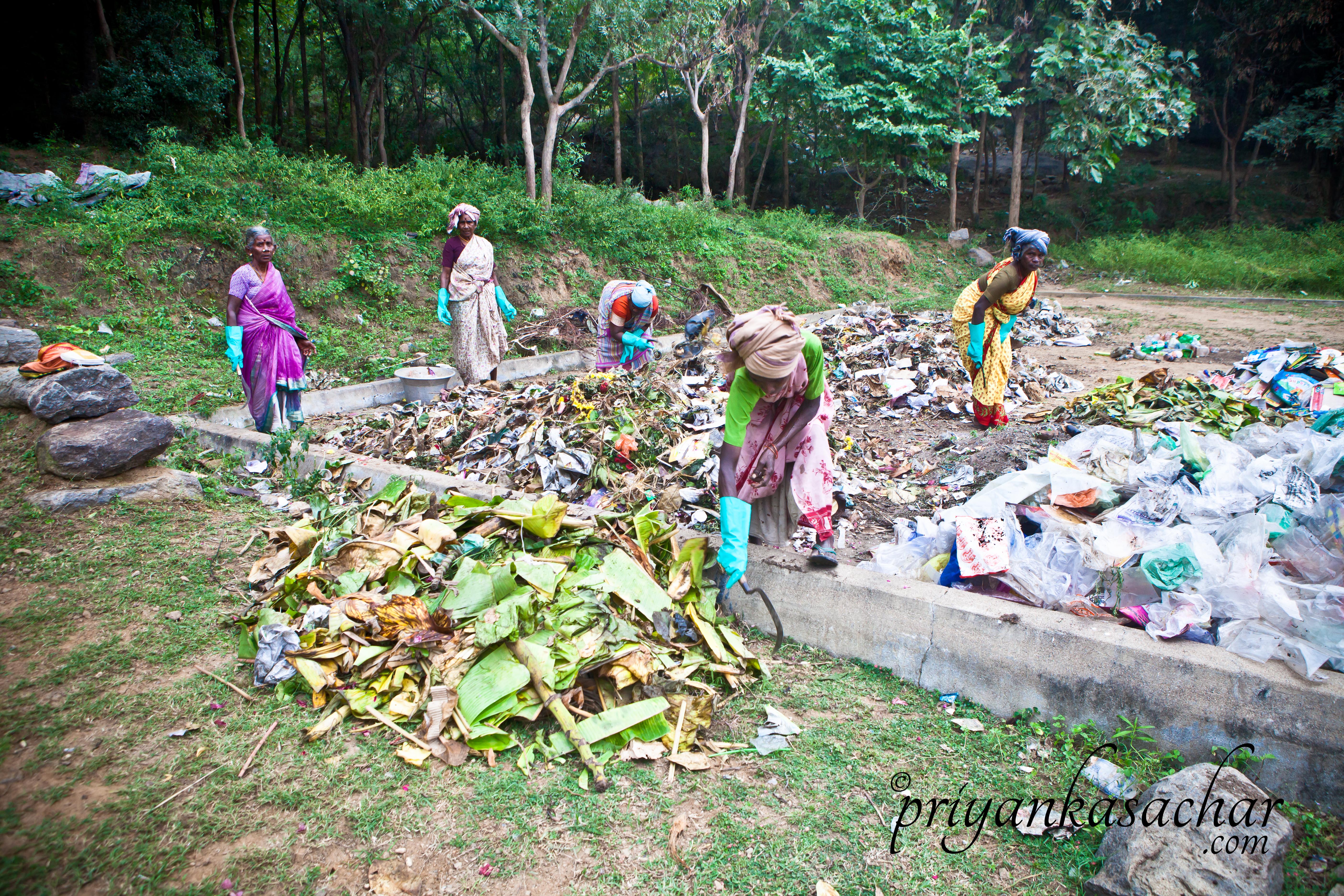My business class experience with Spicejet’s #spicebiz
Recently Spicejet – one of India’s leading airlines rolled out its all-new business class offering – SpiceBiz – and invited me to try it out. Needless to say It took me absolutely no time to get on board. Literally 😉
The airline is offering a dedicated business class cabin with 43-inch seat pitch and 7-inch recline, complimentary lounge access, higher baggage allowance, gourmet meals/beverages, priority services and much more. There’s also a dedicated cabin crew for business class passengers. This was going to be my first experience of business class, even if on a domestic airline. So I was very eager to try it out. I had a choice of a few sectors that this seating is currently available on from Delhi, so I chose a Delhi to Calcutta and back trip (Boeing 737). Last I had been to Cal was in the 90’s. And I had been aching to visit ever since.
Depending on the aircraft configuration, SpiceJet offers 8, 12 and 28 business-class seats on its B737-700/800/900 aircrafts respectively. The front row and the over-wing exit rows of the economy cabin are offered as the premium economy seats – SpiceMax.
Now I’ll share my experience of various Spicebiz offerings.
dedicated Checkin experience with spicebiz:
On 27th May, I reached the T1 terminal, Delhi to board my Spicejet flight to Kolkata. I already had a window seat – in fact the first passenger seat. So all I had to do was drop my baggage & collect boarding passes. Spicejet has dedicated check-in counters for all SpiceBiz customers at Delhi, Mumbai, Kolkata, Chennai, Bengaluru, Hyderabad, Pune, Srinagar, Jammu, Goa, Port Blair, Guwahati, Varanasi, Jaipur, Coimbatore, Kochi and Patna. At all other stations, passengers have access to a shared check-in counter with SpiceMax passengers. So I had a dedicated counter for me which was empty. The staff was smartly dressed, friendly and swift in their job. There’s a dedicated loader also for Spicebiz customers who helps load the luggage. Normally one has to load the luggage oneself on to the conveyor belt. I was handed over my boarding pass as well as lounge coupon by the Lady in Red. And I was assigned a special attendant from Spicejet, to escort me through to the boarding point. Please note, the attendant is NOT part of the Spicebiz offering but it was an additional VIP service I was provided with, to ensure my comfort. Basically I was a VIP customer And I highly appreciated it. 🙂 I proceeded from here to the lounge partner of Spicejet airlines – which was Plaza Premium lounge at the Delhi T1 airport.
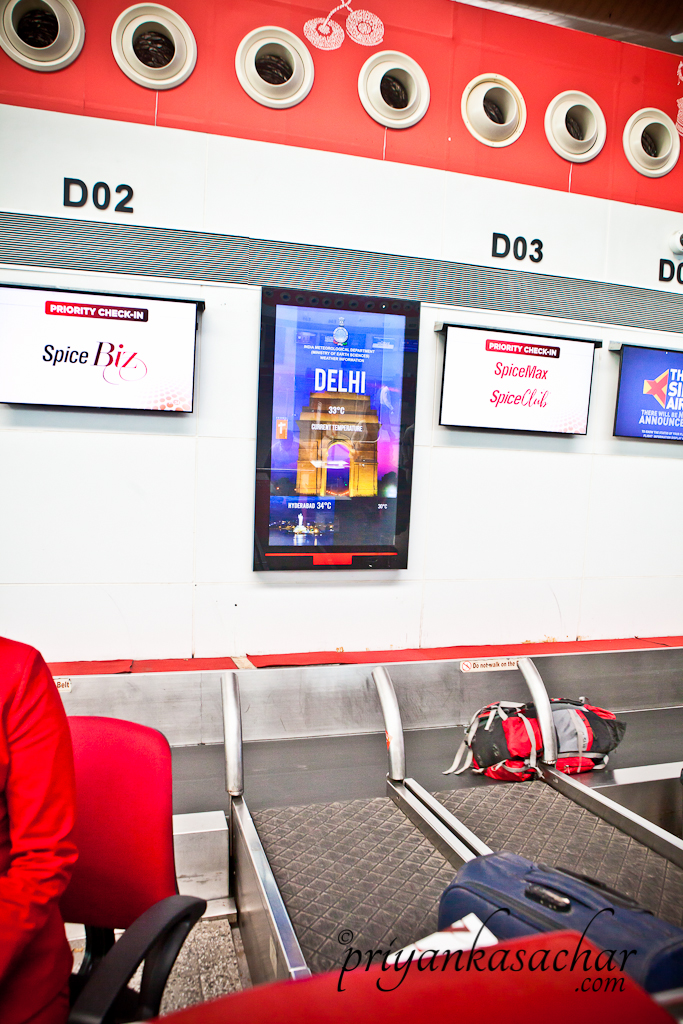
Exclusive counter for Spicebiz customers

Well dressed staff with exclusive loader for spicebiz
Lounge access with spicebiz:
SpiceBiz passengers currently have access to airport lounges at Delhi, Ahmedabad, Bengaluru, Hyderabad, Mumbai, Chennai, Kolkata, Varanasi, Jaipur, Guwahati, and Kochi airports. This service will soon be available at other airports.
Since their partner at T1 terminal, Delhi was Plaza premium lounge, I was escorted by the attendant to this lounge. I had around an hour during which I had a light breakfast. The meals are complimentary for all the guests who have access to the lounge. The buffet was pretty standard. The usual quick bite option of fruits, bread/butter/jam was there. The meals are basically 5 dishes which are a mix of Indian and Continental cuisines. Beverages were tea & coffee (no juices/lassi etc).
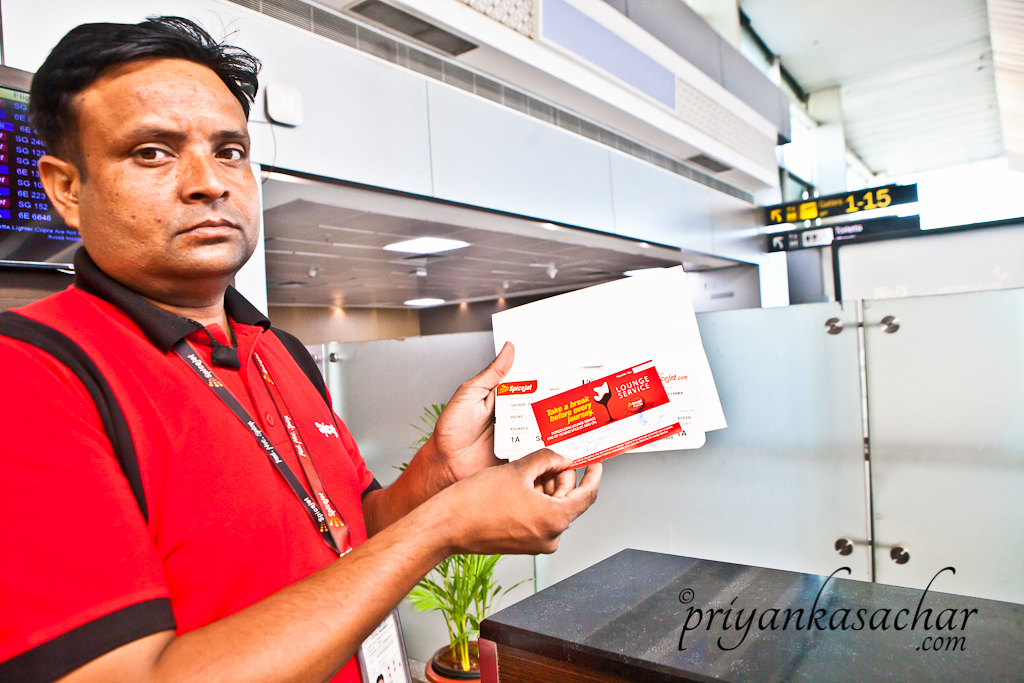
Special assistance given to VIP customers i.e. Moi 🙂
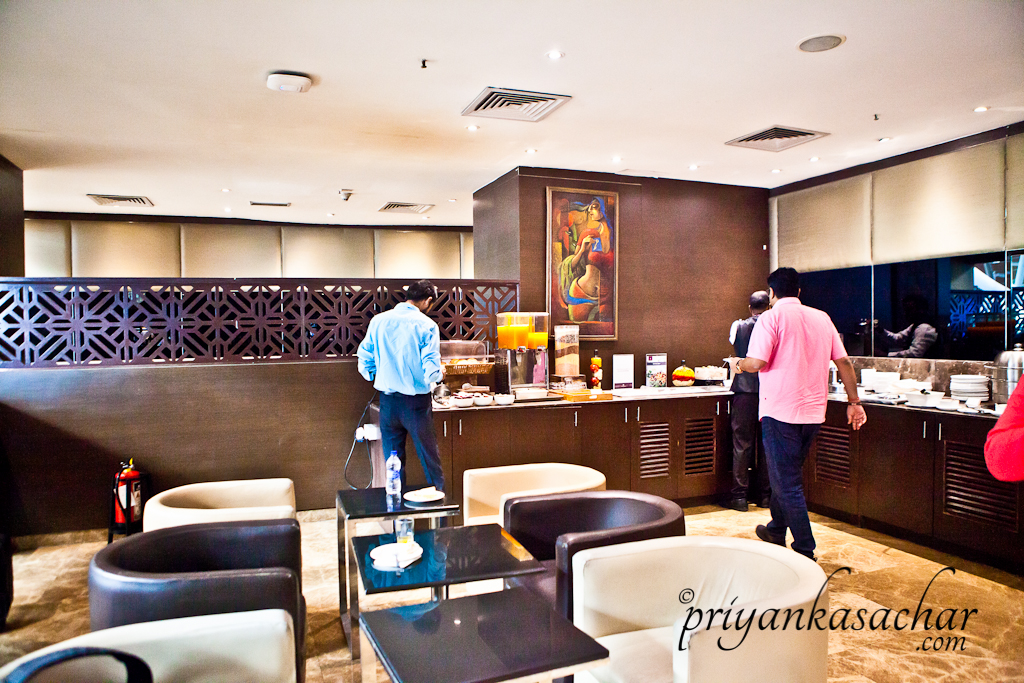
Buffet at plaza premium lounge at T1

Seating area at plaza premium lounge
On the way back for my Kolkata to Delhi flight, at the Netaji Subhash Chandra airport, I relaxed at the Travel Club lounge. I found their catering much better than the Delhi one. And they had specific terminals where one could use one’s laptop. For travellers it is a very helpful addition. Once again, I had been escorted by a person from Spicejet providing assistance, something that’s available only for VIP’s and that Spicejet was kind enough to extend to me :). He even escorted me right up till my seat in the aircraft.

Travel club lounge at Kolkata
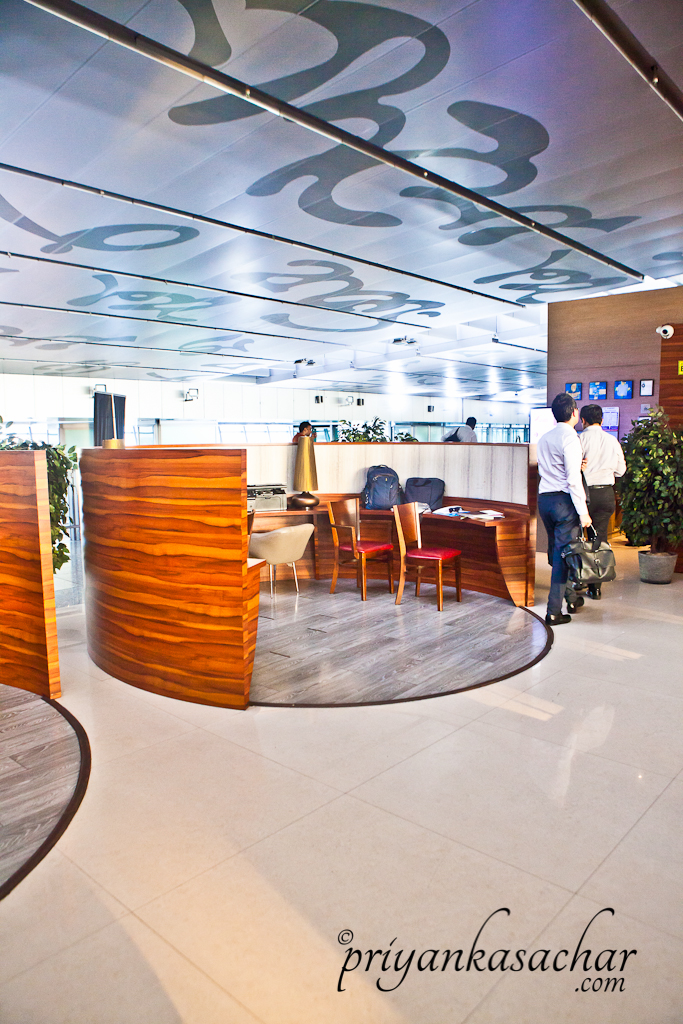
Special terminals in the lounge where one can use their devices comfortably
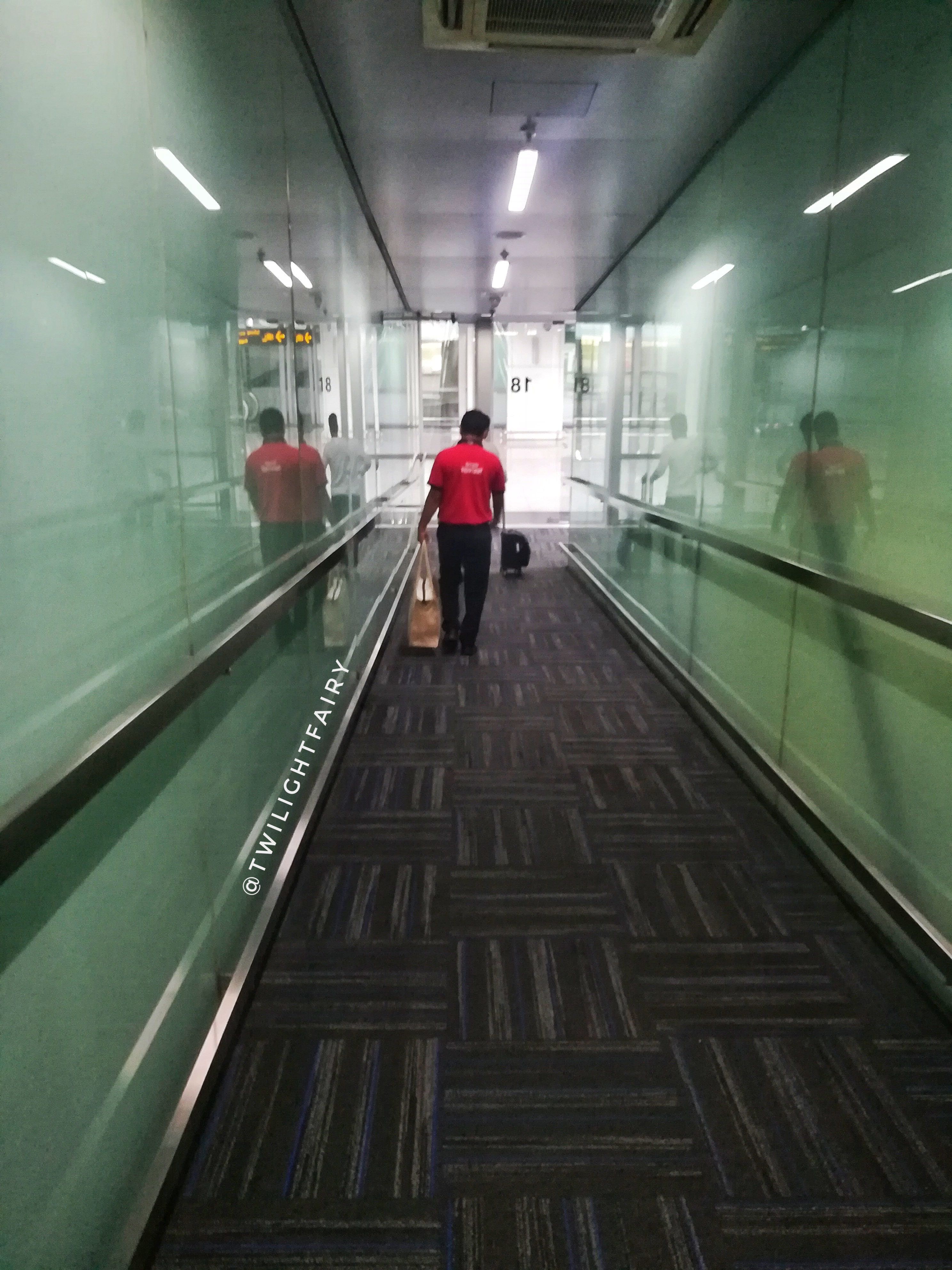
VIP assistance right up till my seat!
Enhanced baggage allowance with spicebiz:
Passengers travelling in business class are entitled to additional baggage allowance. All domestic passengers have a check-in allowance of 30 kg (up from the regular 15 kg). Hand baggage allowance for passengers travelling on domestic routes has also been extended to 10 kg (excluding laptops), from the current 7 kg. I was travelling light so I wasn’t carrying a lot with me. But it was nice to know that I could shop a LOT from Calcutta and still be within my luggage limit ;). In fact I bought a hand bag from there and also carried back some of my extra shopping as hand baggage on my return flight.
Priority services with spicebiz:
All SpiceBiz customers get the priority services offered by the airline, such as priority check-in, priority boarding and priority baggage. This basically means that YOUR luggage gets checked in first. Spicebiz customers get to board the plane or the coach leading to the plane – first. And once you arrive at the destination, the priority baggage ensures that the entire crowd from the plane would be standing next to the conveyor belt at arrivals, and the first and only piece of luggage that comes up is yours 🙂 . It was fascinating.
The In flight experience
The flight was extremely comfortable. The business class leg room was a lot! It didn’t feel claustrophobic and my knees didn’t knock on any front seat. I didn’t get edema in my ankles (that I typically get during airline travel). The seat was pretty comfortable without having to recline it. And once reclined, it was almost like lying down! I had 3 whole windows with me that was a big bonus since I love taking aerial pictures. It was a nice feeling not having to hunch into a convex shape while getting into my seat because there was so much space. Here are a few images that describe the experience. I took them once the Aircraft got empty.
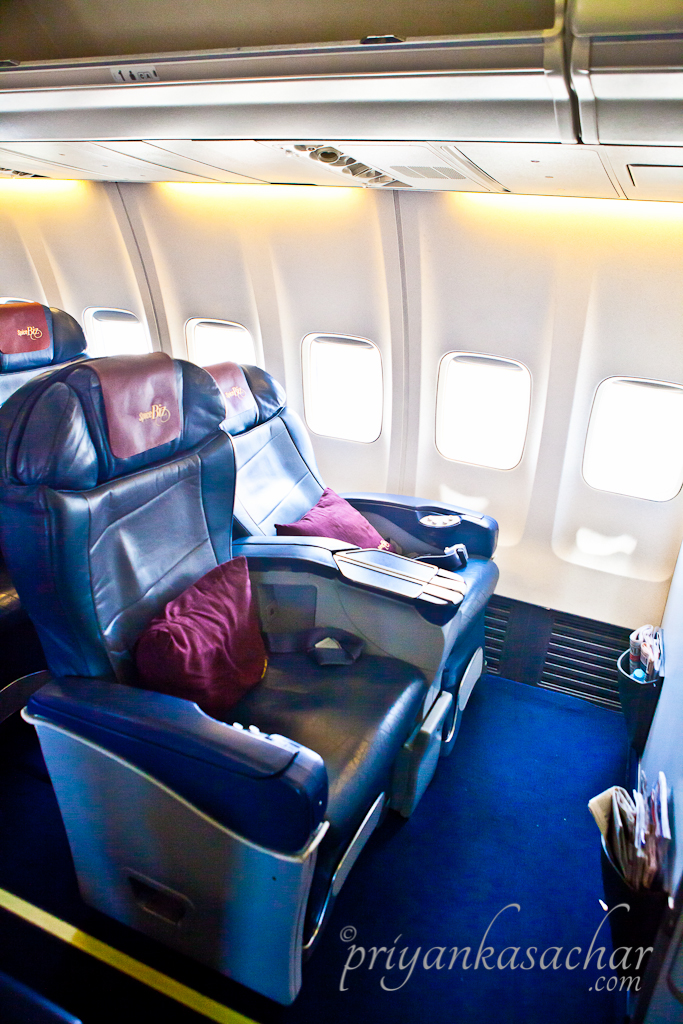
Upright and reclined seat, as well as the leg space

A cushion is provided to all passengers. Blanket – on request.
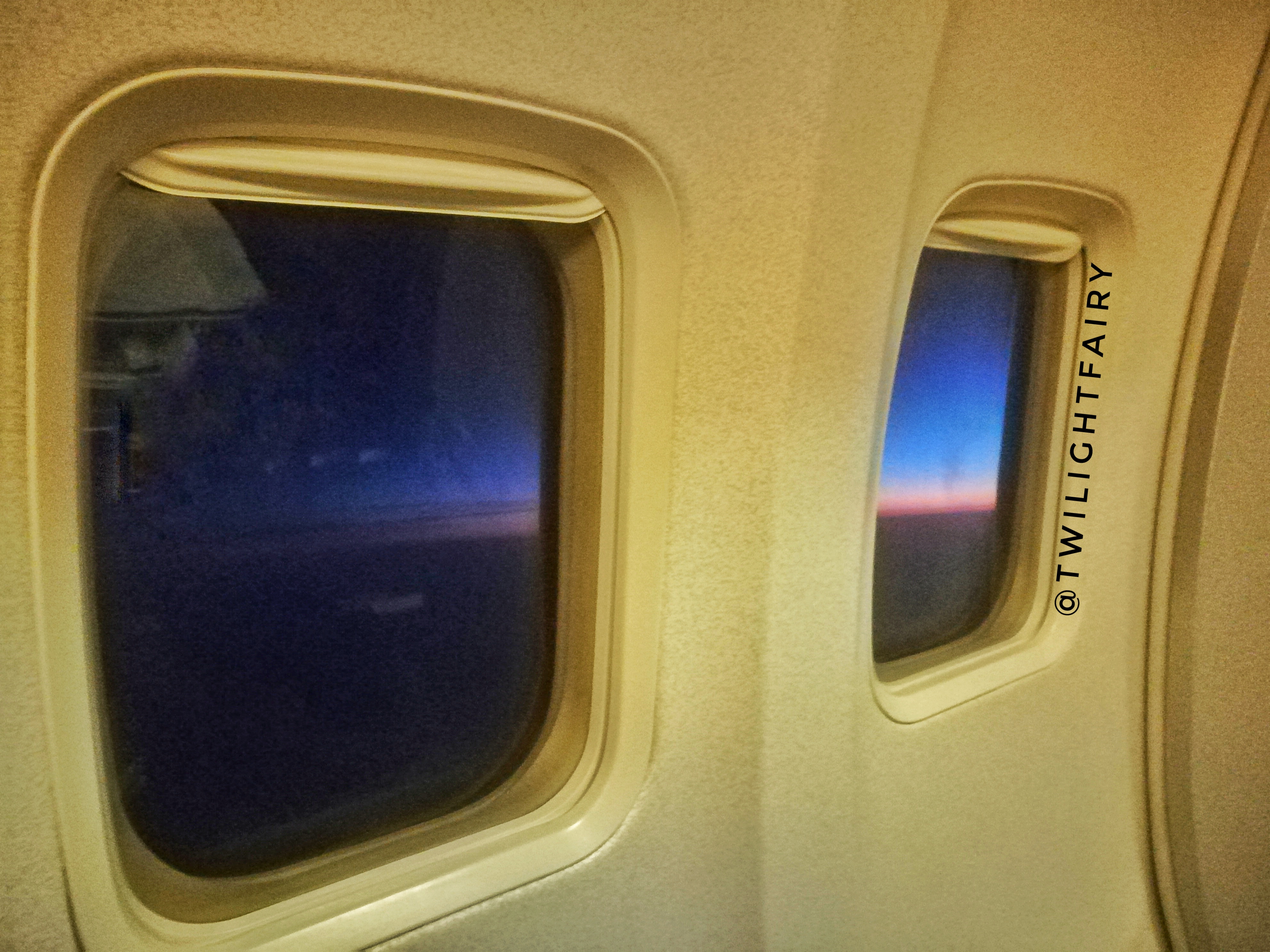
Twilight from the ample window space.

Window space with reclined seat
Gourmet meals aboard spicebiz:
Once on board, business class customers were offered a refreshing cool towel. It was much needed given the heat! Then we were presented with beverages like Coconut water, watermelon juice, tea & coffee. I had a chilled coconut water (and Lemonade on my flight back) and what better on a hot summer morning! I was impressed with SpiceJet’s three-course culinary journey, aimed at balancing health and indulgence. The selections were very contemporary and suiting modern palates. People can also order their meal beforehand and in case of prior booking, I Was told by the flight attendant, the variety in the menu is a lot more. Soon enough, one of the smartly dressed flight attendants spread linen on my tray table and then based on my choice, proceeded to serve me my meal on fine bone china, with sleek cutlery that had the Spicejet insignia on it.
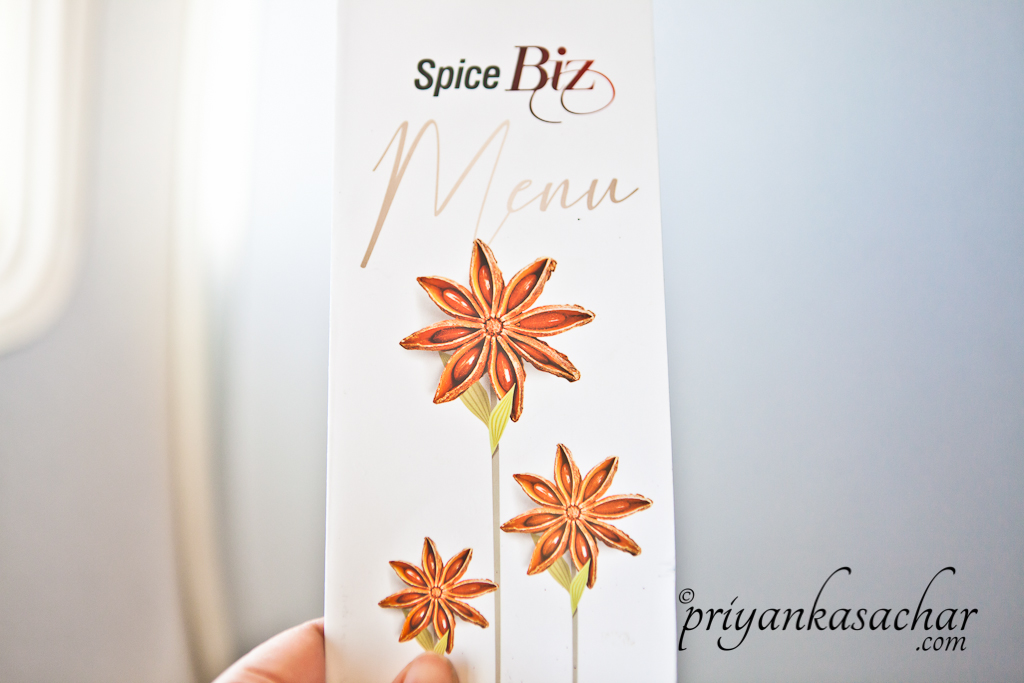
The Spicebiz menu. Love the star anise
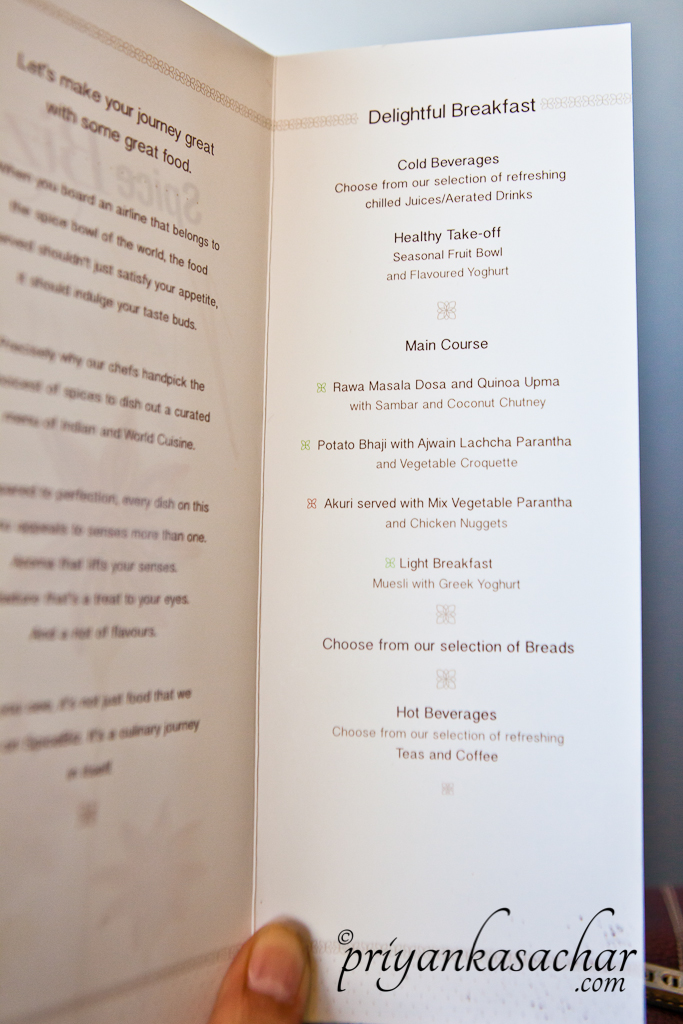
Spicebiz breakfast menu
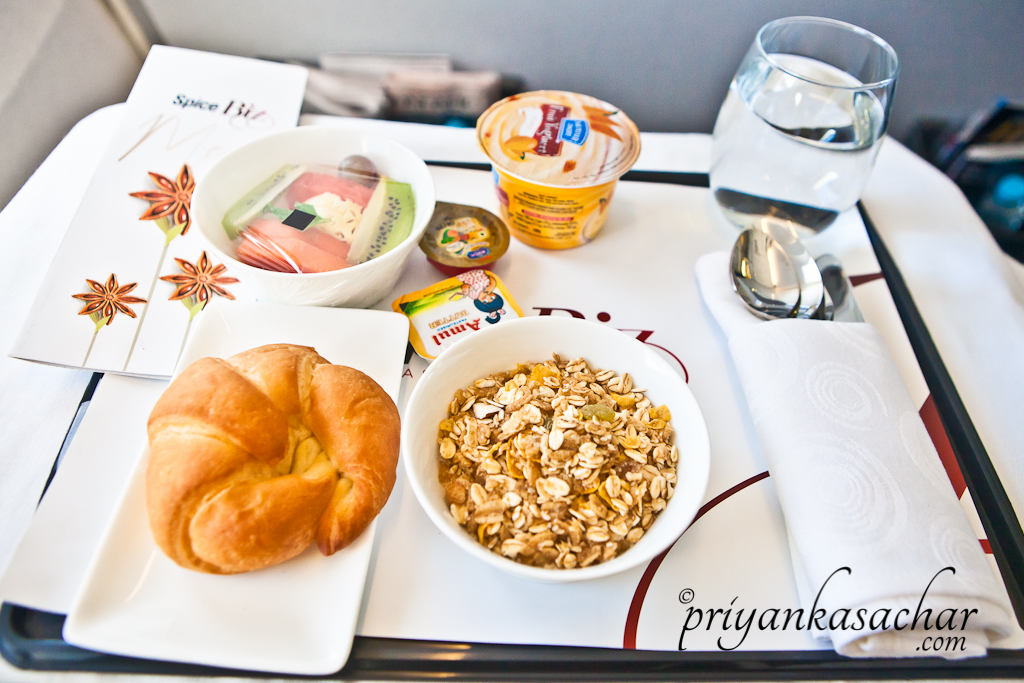
Muesli with yogurt, fresh fruits & croissant
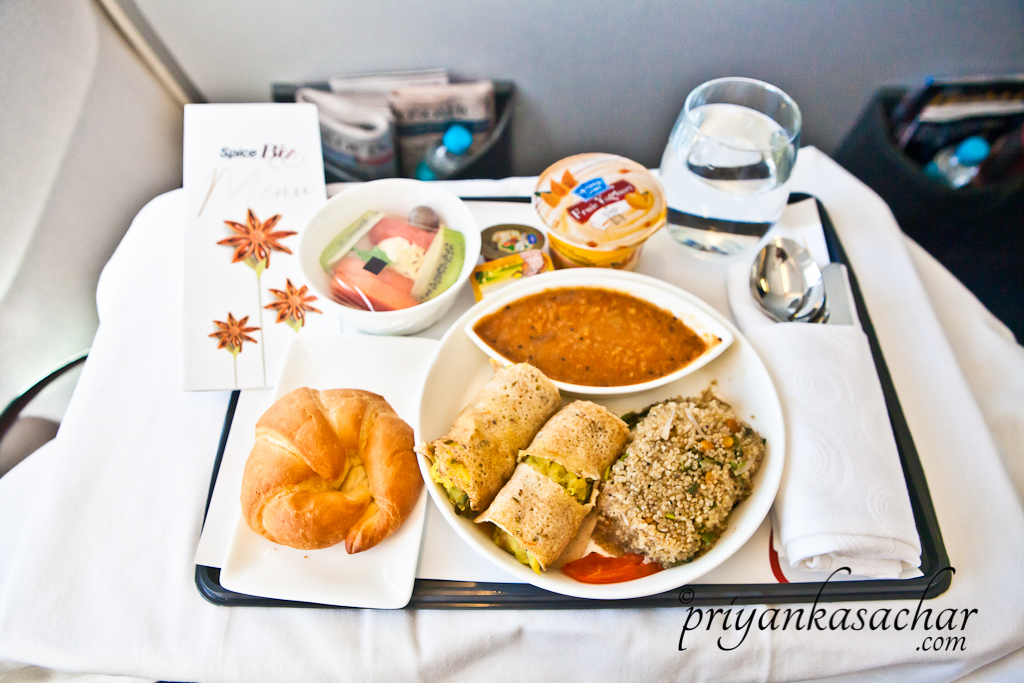
Rawa masala dosa & Quinoa Upma
These were breakfast meals and no I didn’t have two of them 🙂 . The lunch/dinner meals are more elaborate and also include an extra course of various kinds of breads! Lunch/dinner meals also include a sumptuous dessert .

Selection of breads before lunch

Veg Manchurian with Veg noodles with braised Pakchoi, Dahi bhalla chaat & Chocolate dome
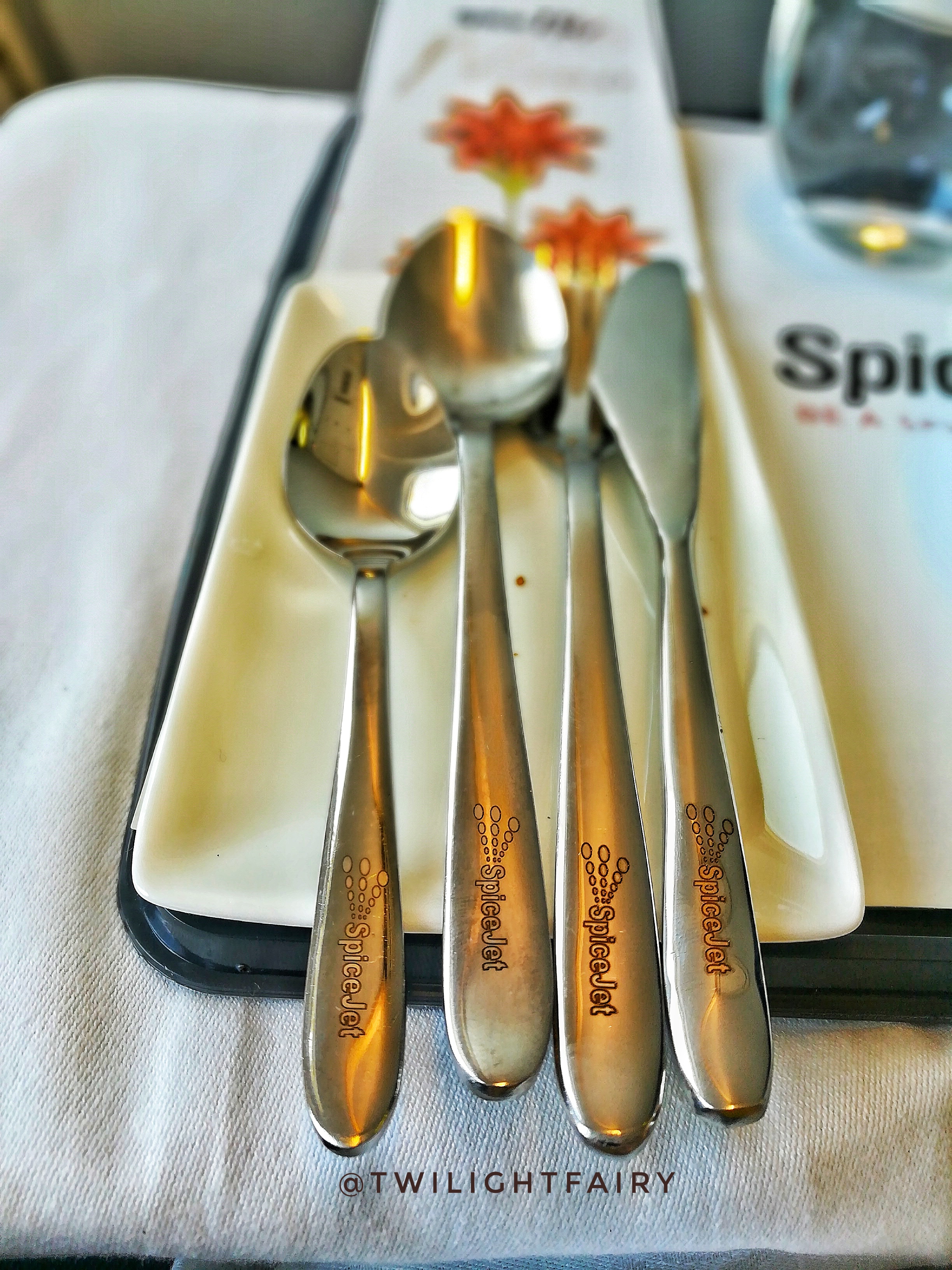
Exquisite cutlery with Spicejet Insignia
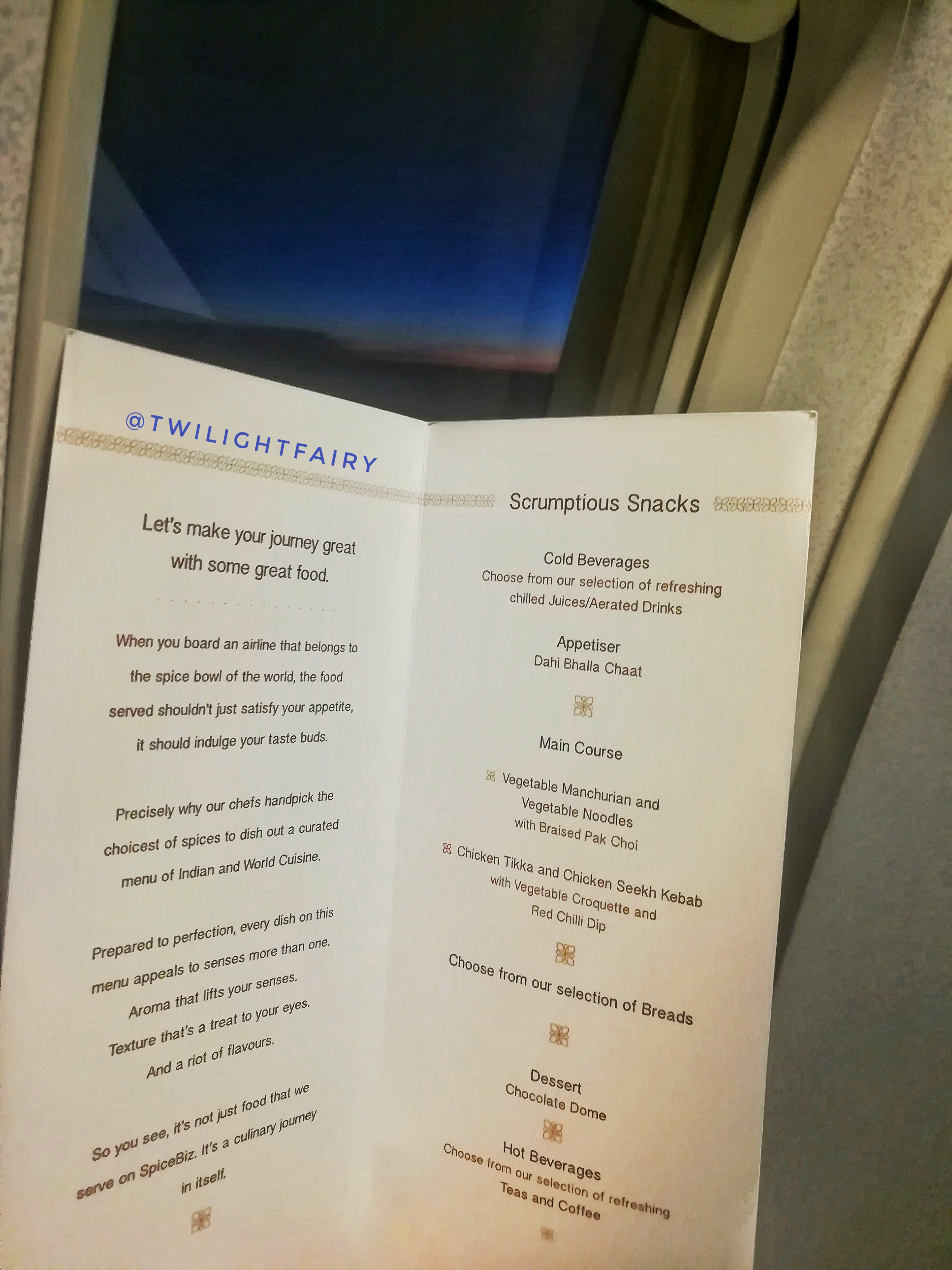
Dinner menu of Spicebiz
After the meal, we were handed hot towels to wipe our hands with. We were offered beverages throughout the duration of the flight as well. I must say Taj SATS did a fine catering job here.
I had a great experience traveling in luxury with plush seats, gourmet meals and lounge access. Go ahead and try it! SpiceJet will soon be offering SpiceBiz on select international routes too. Wonder if they will invite me for that too 😉
